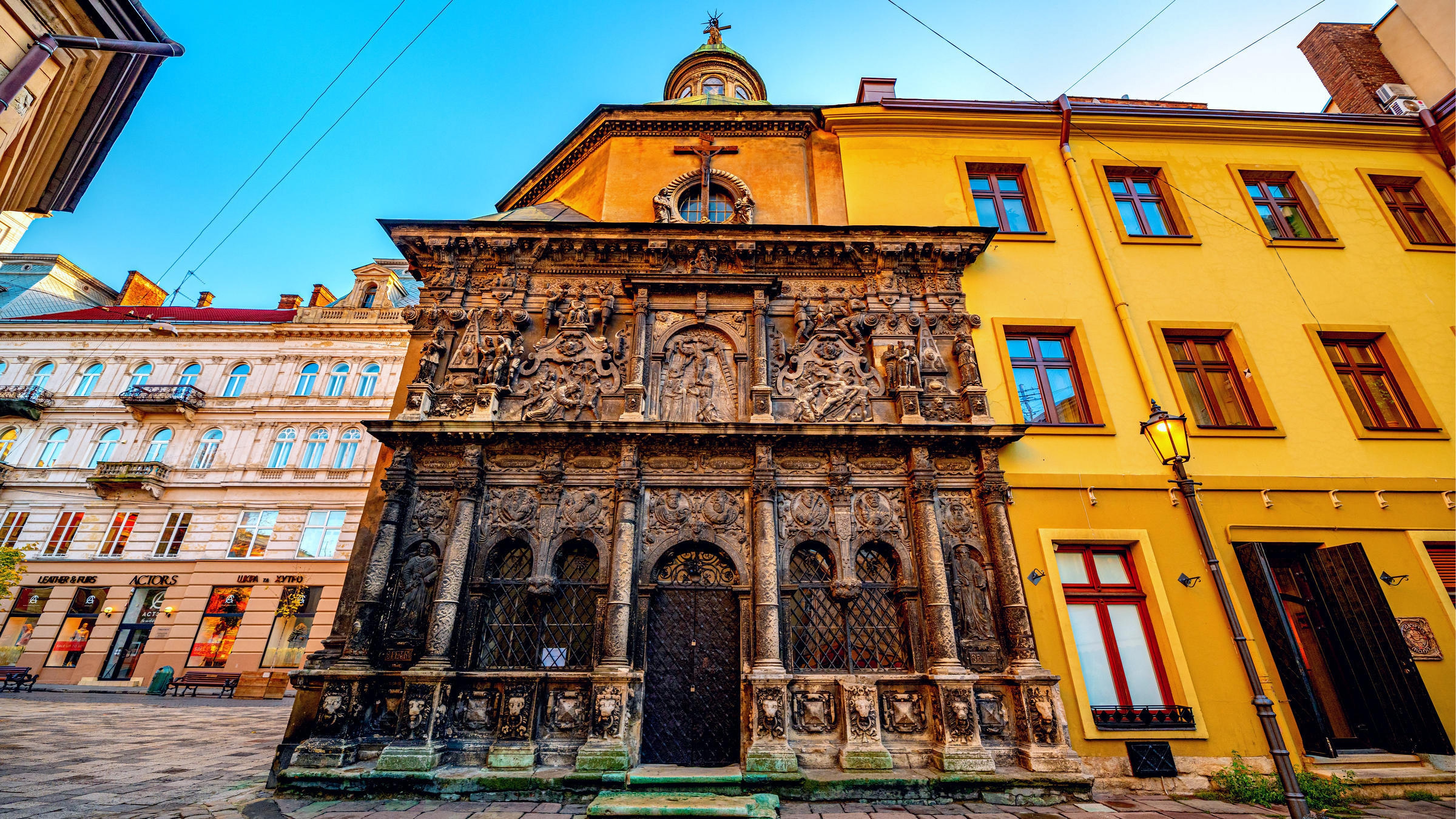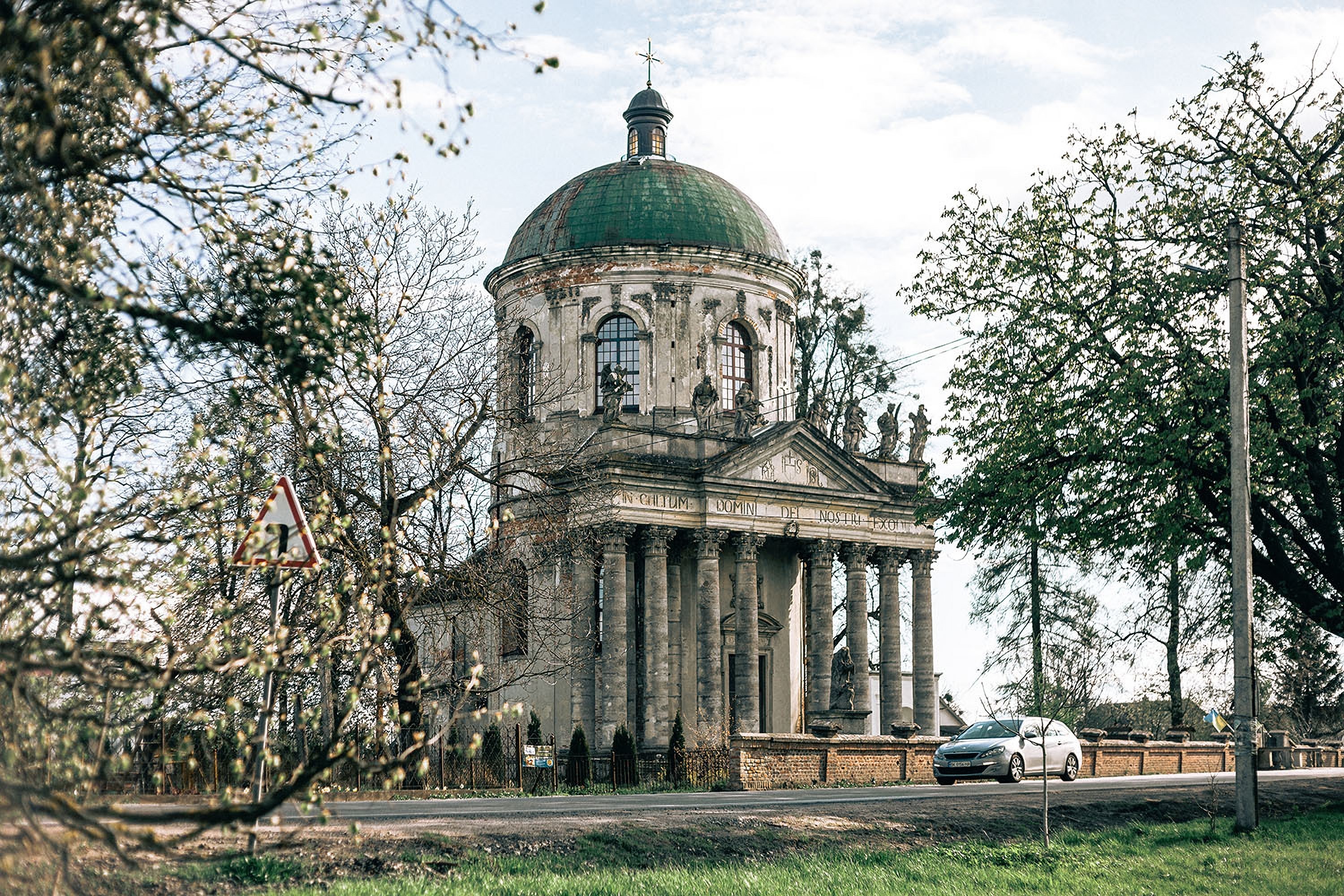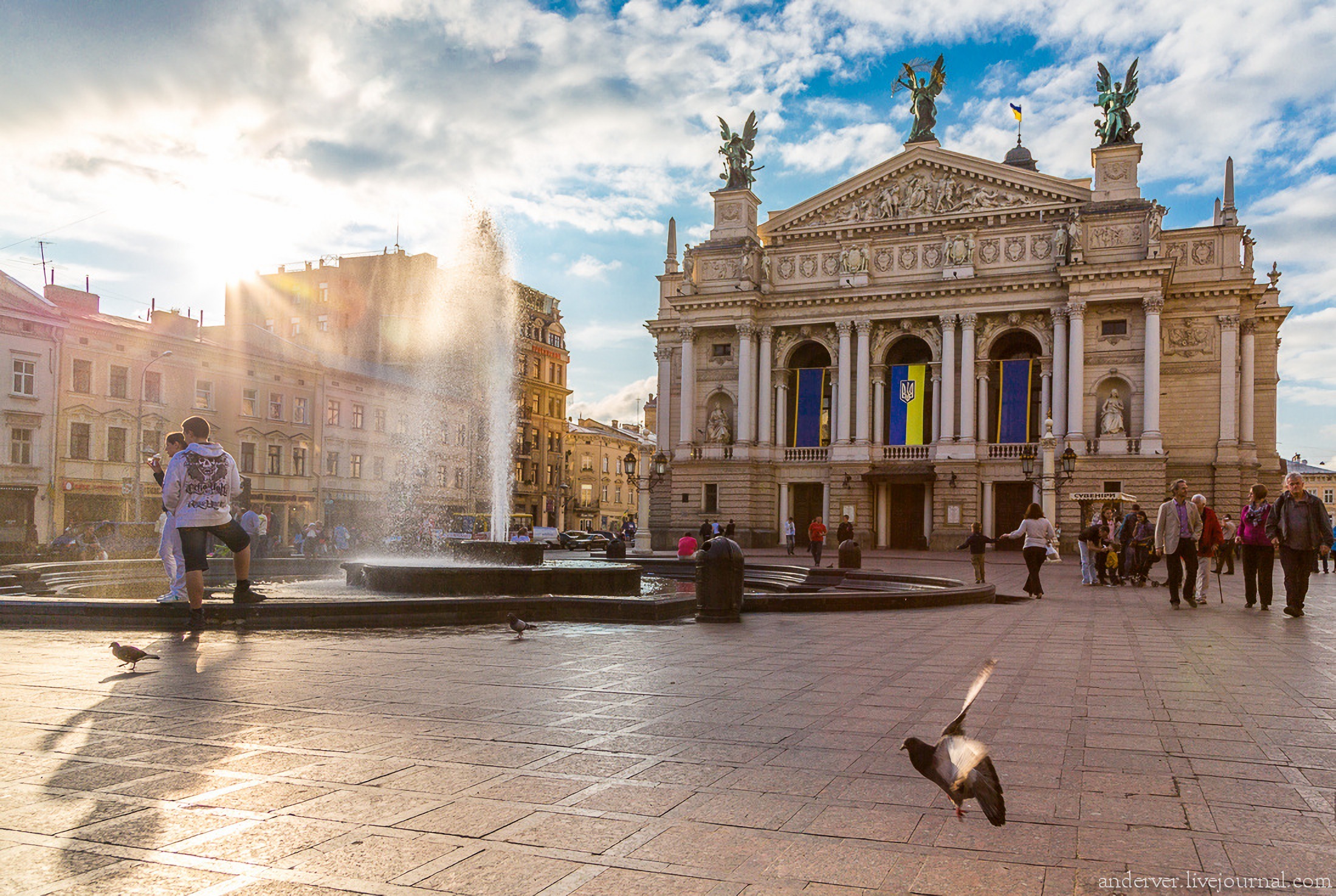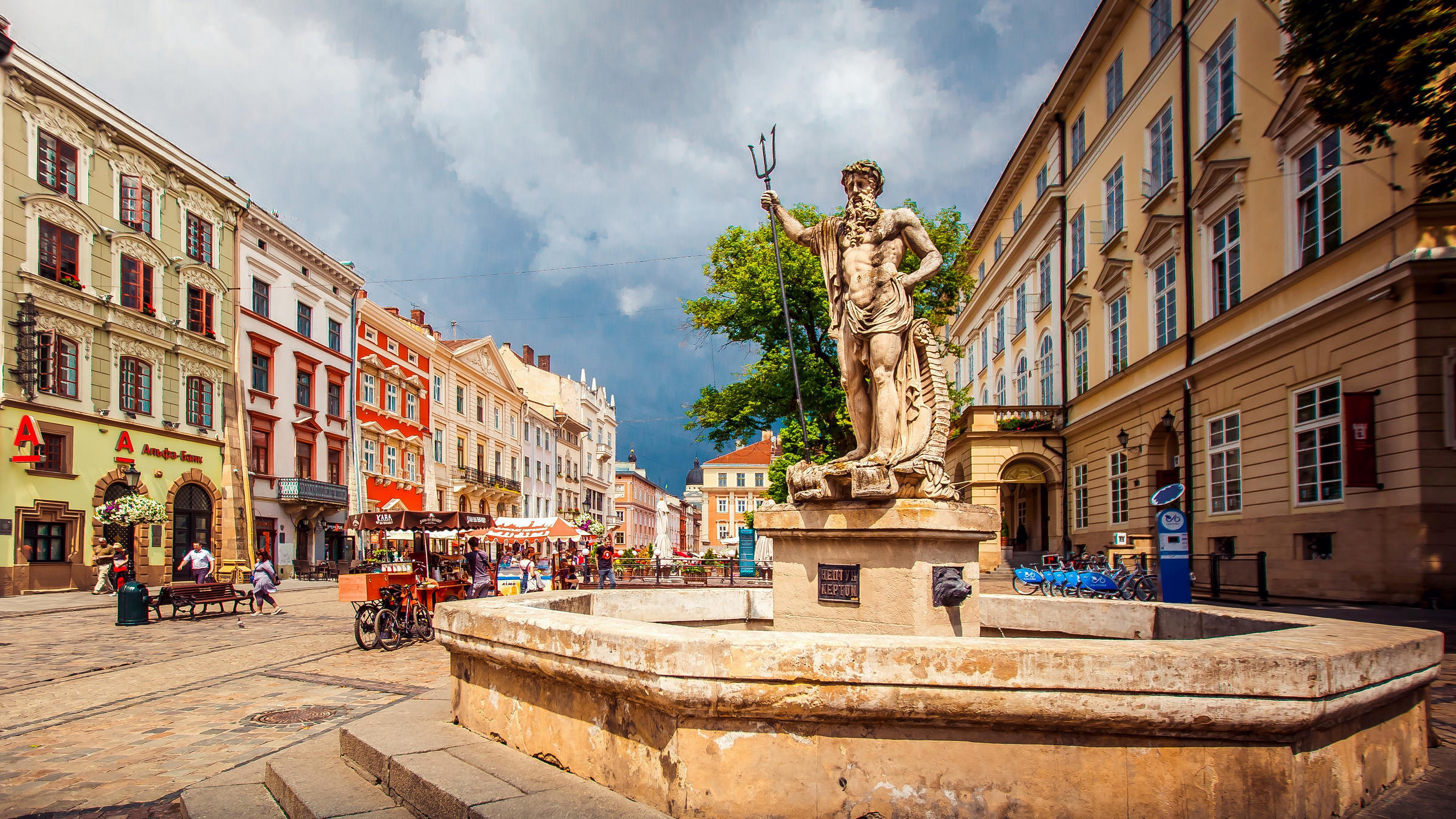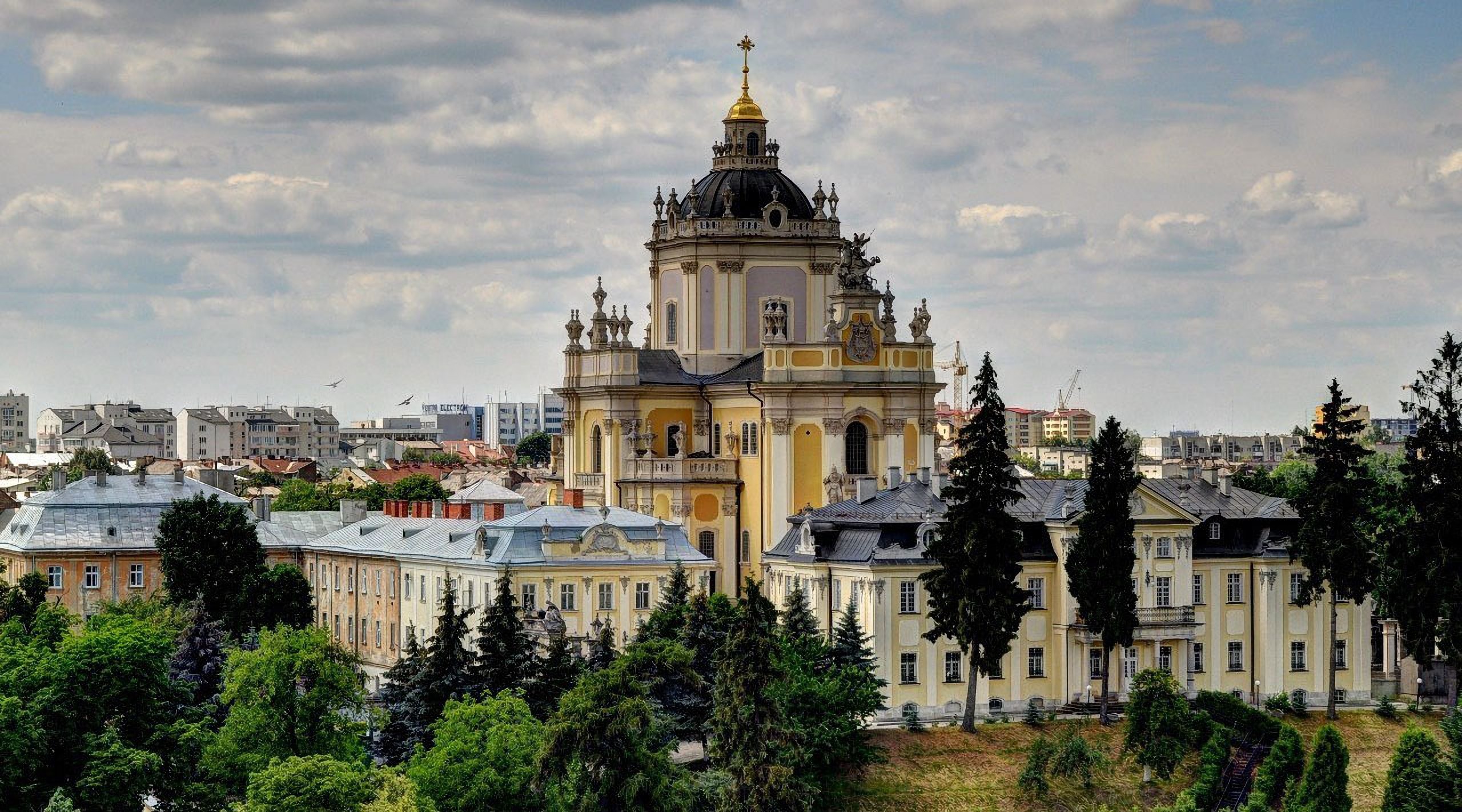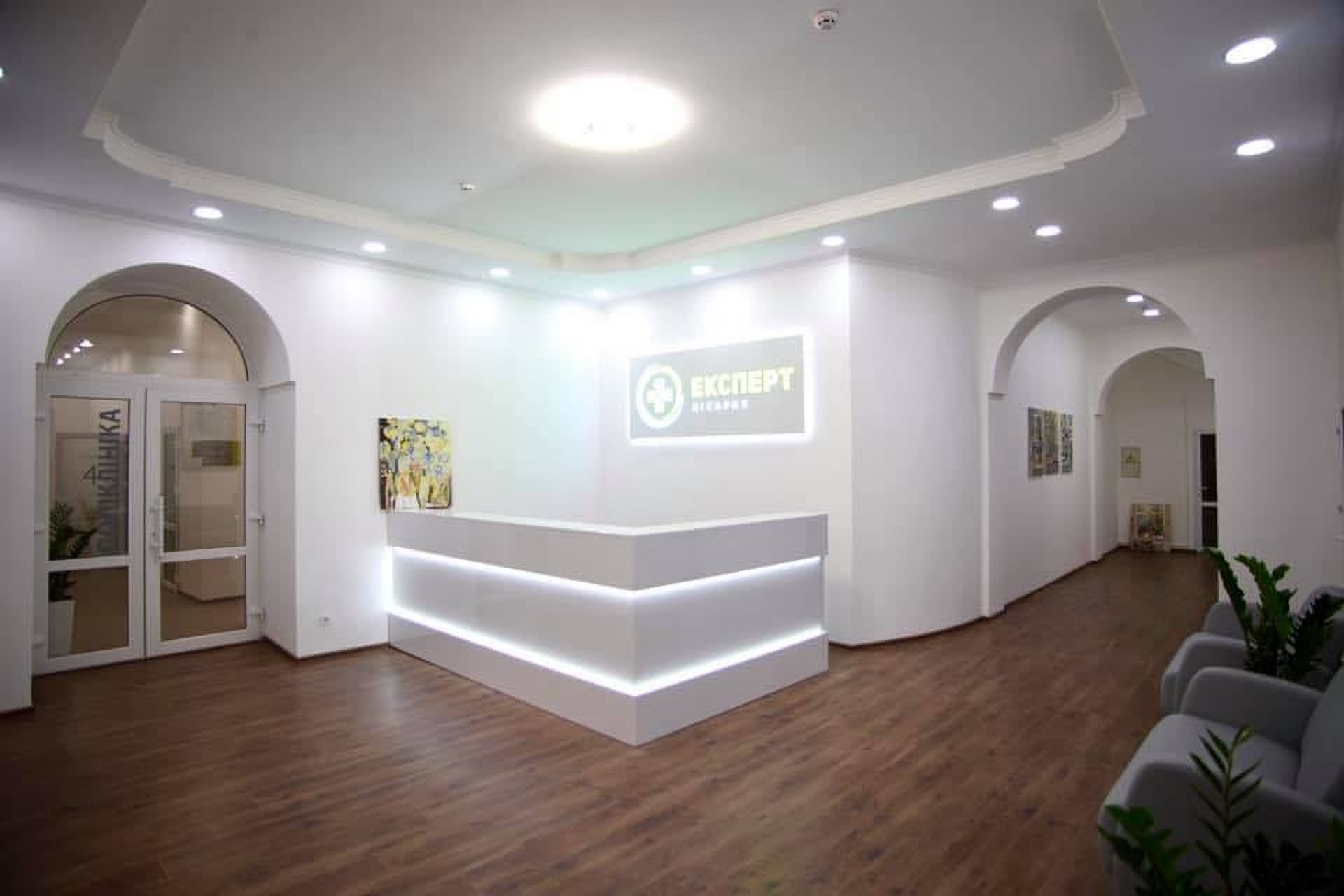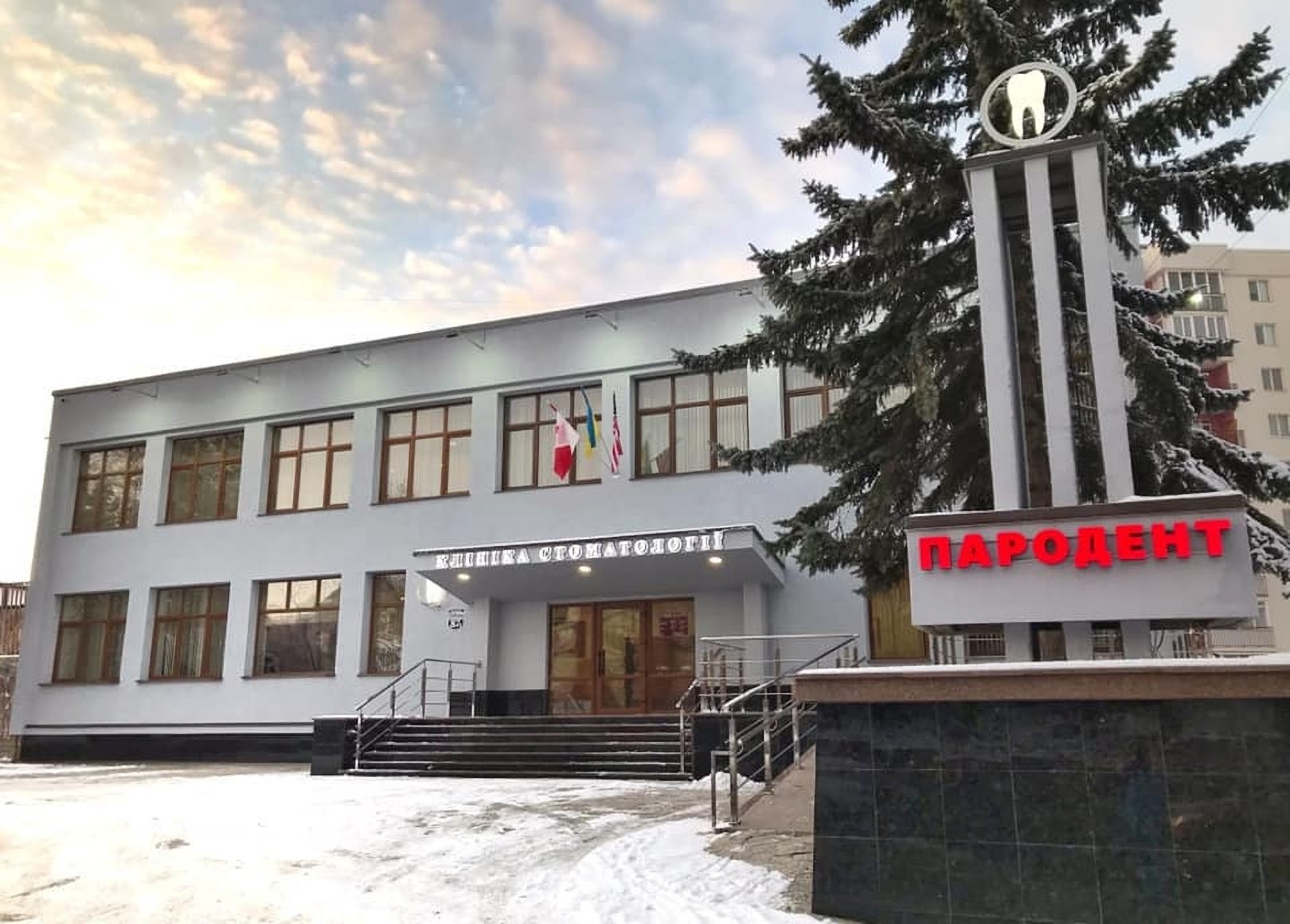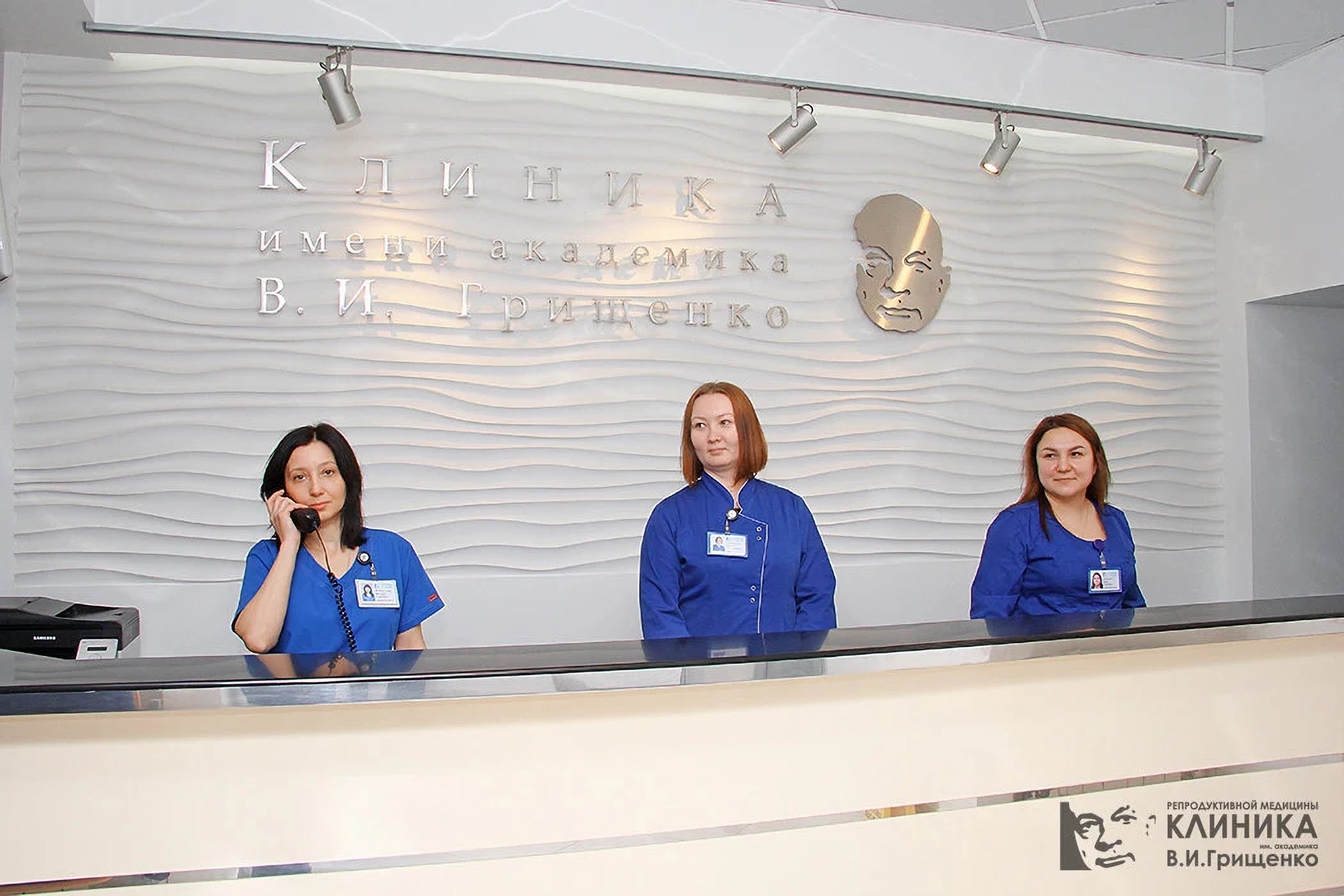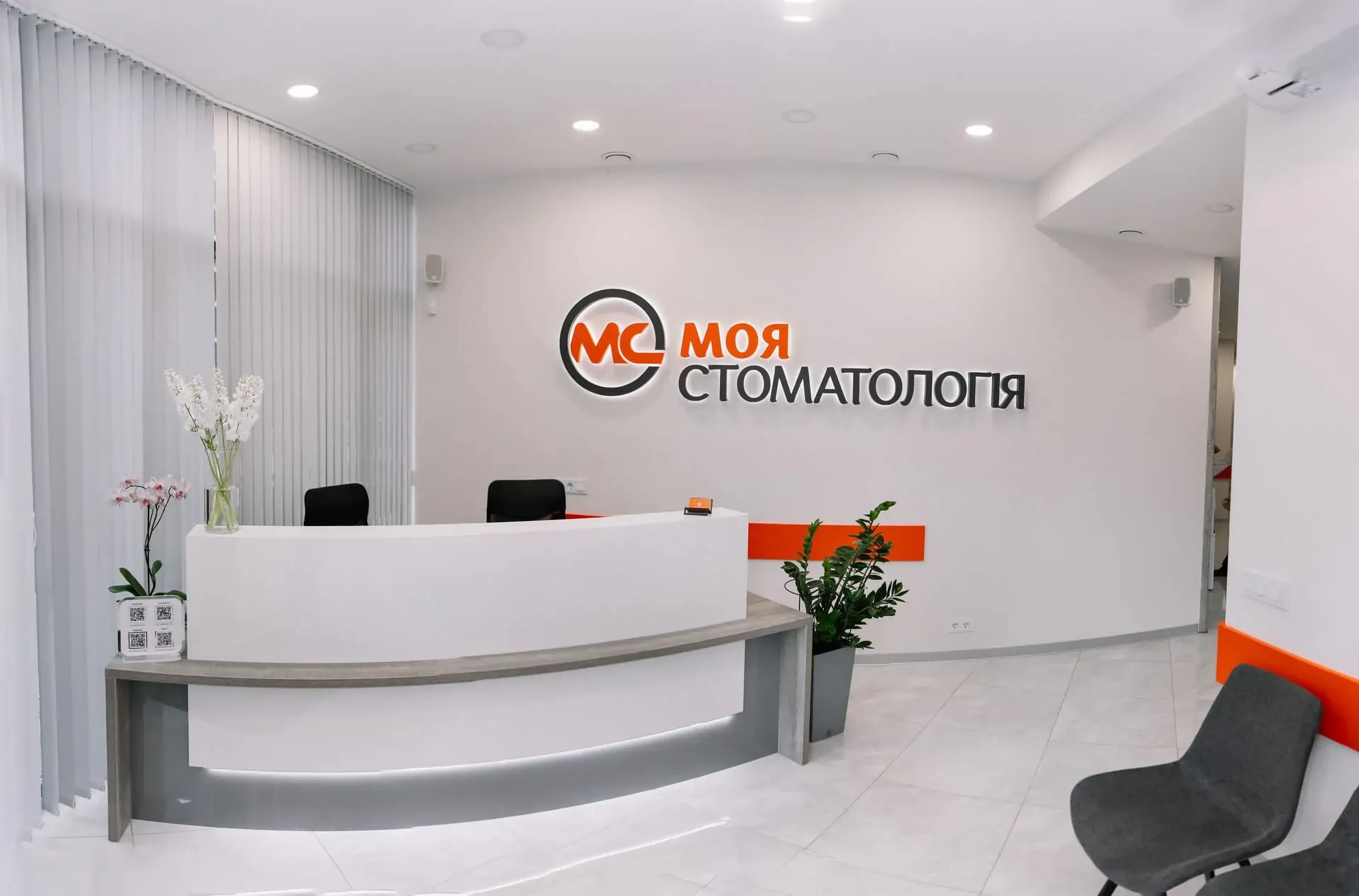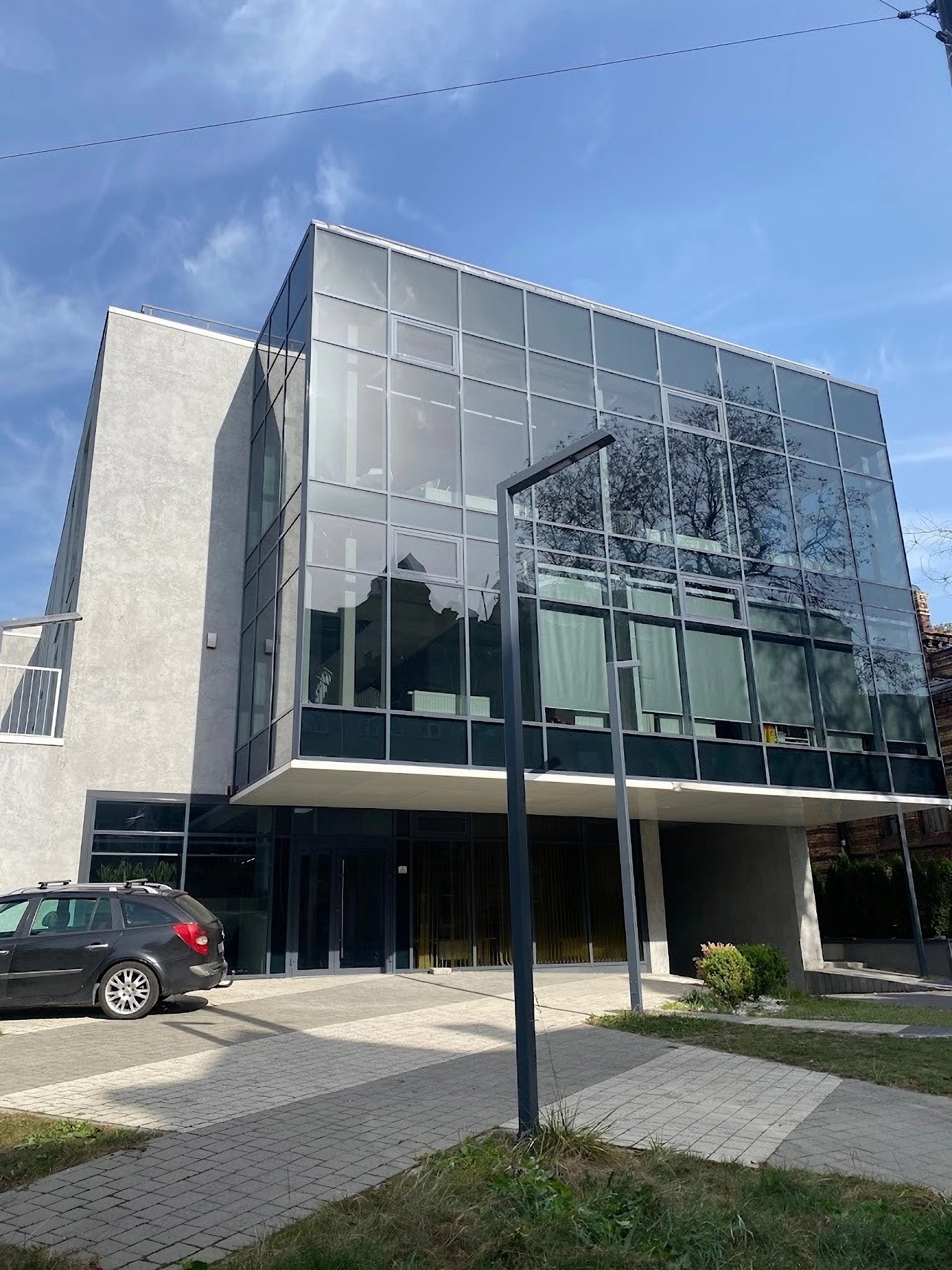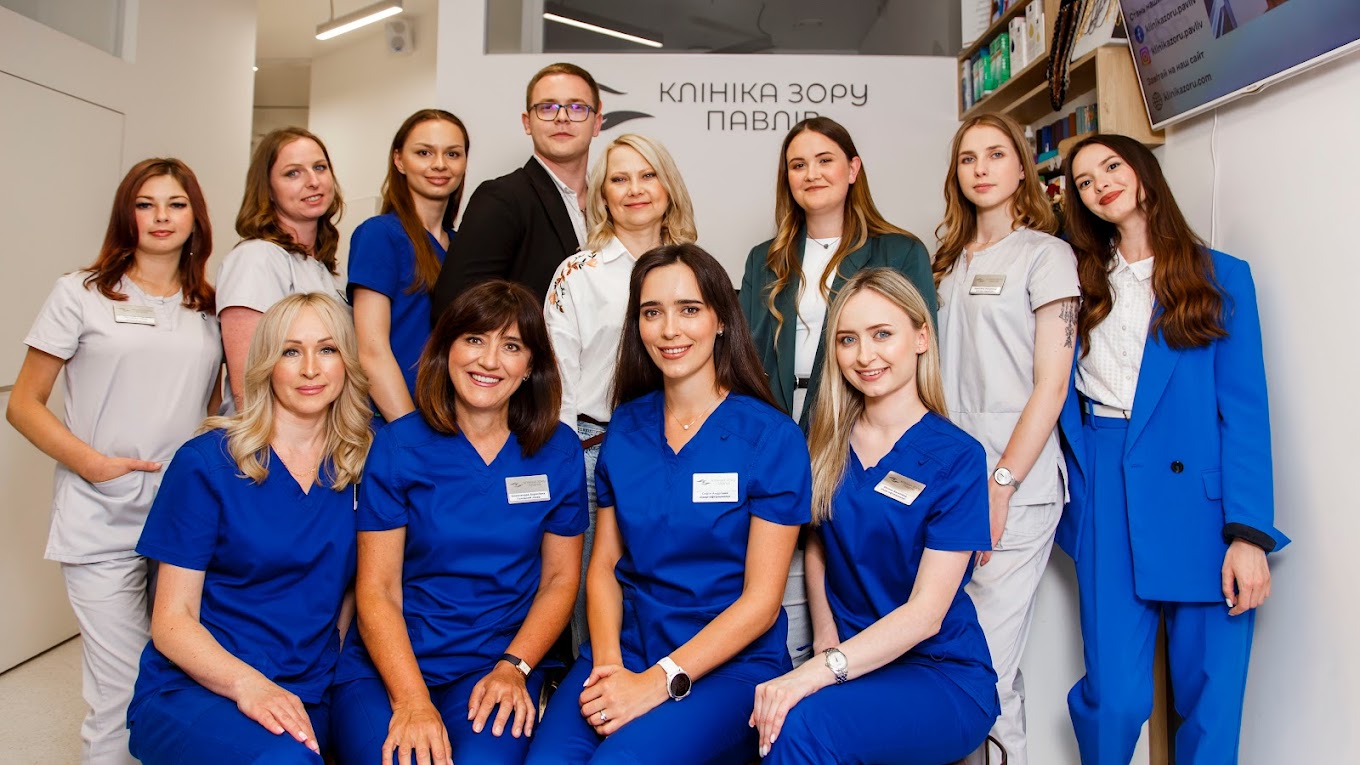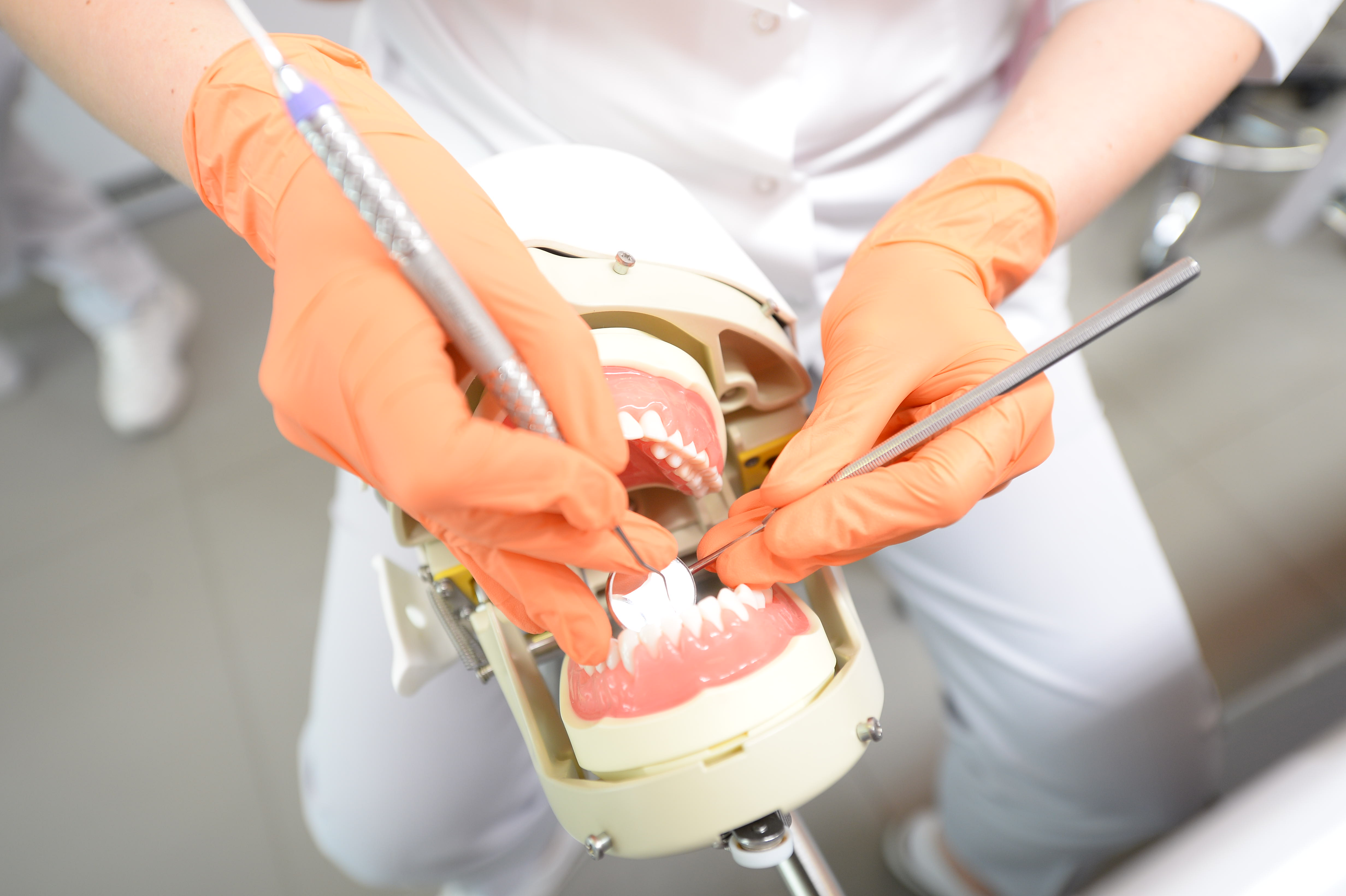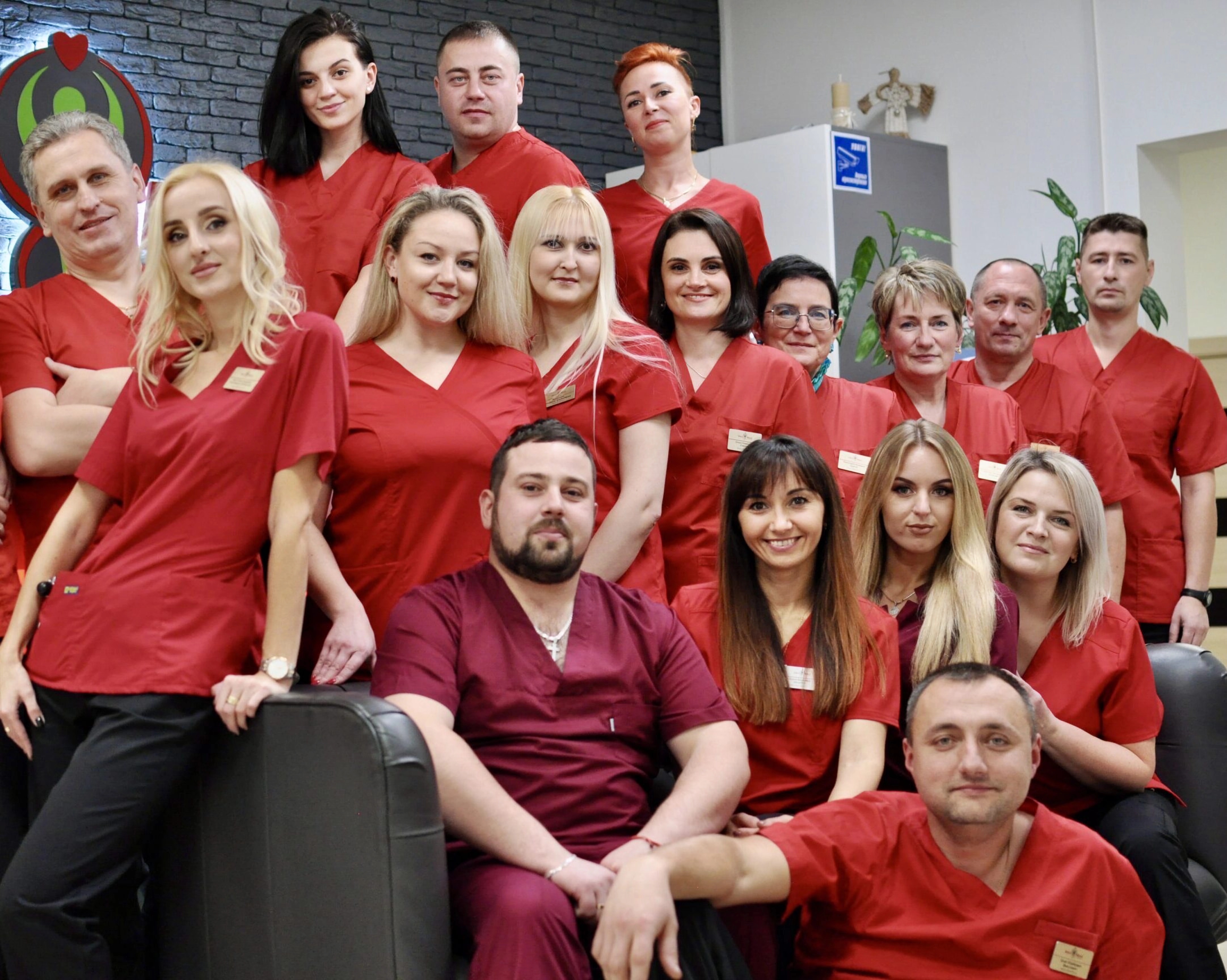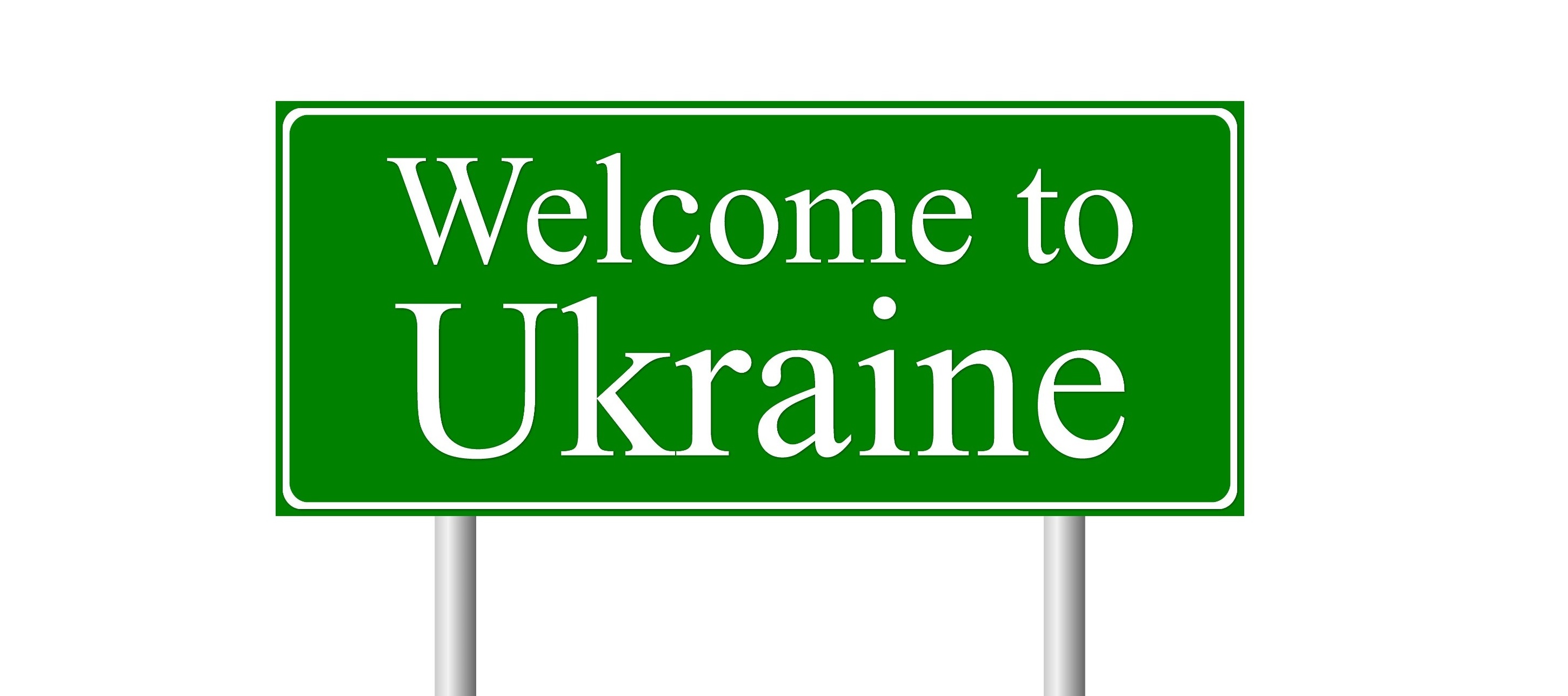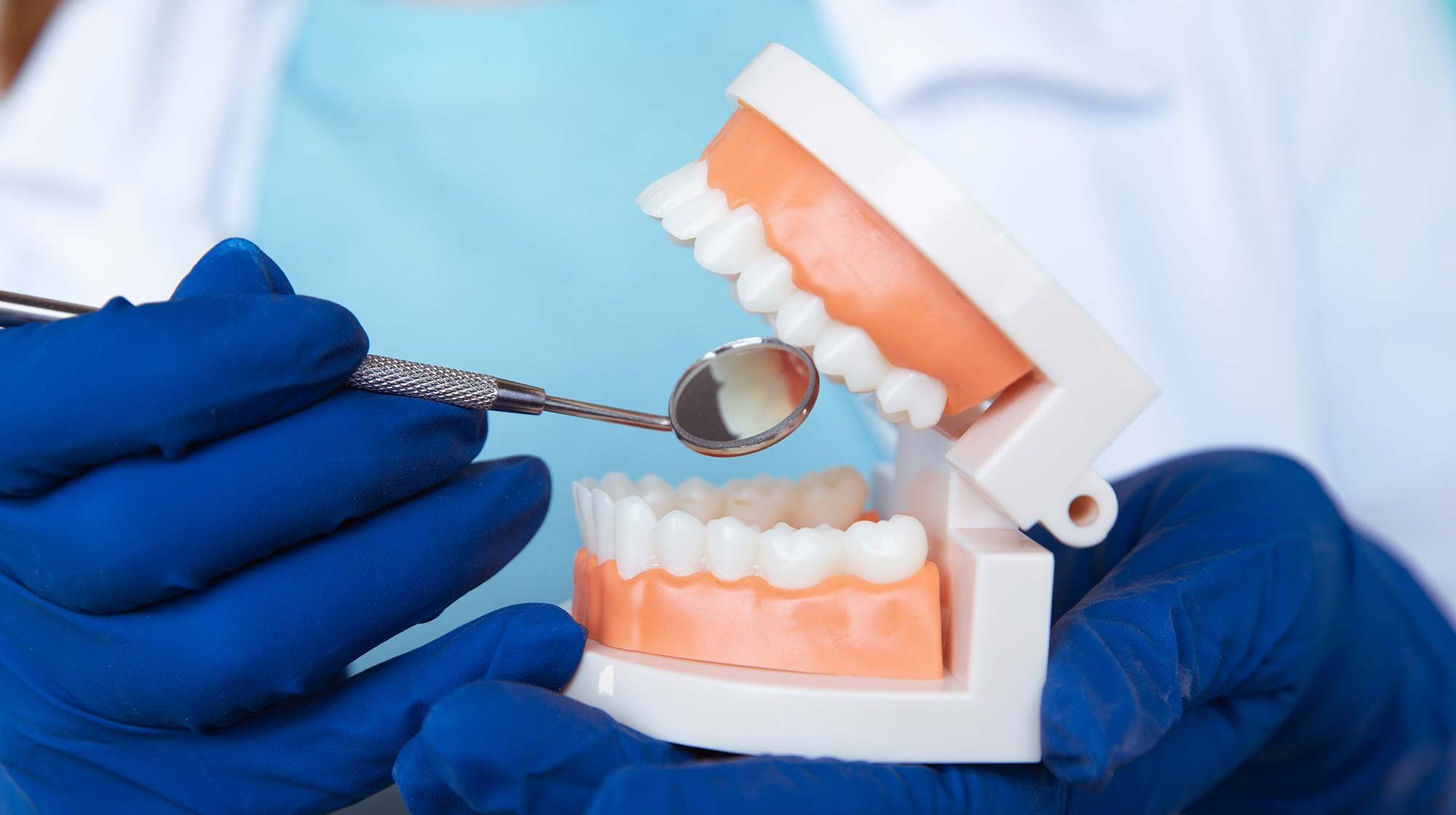Lviv: what you need to know about Lviv, Ukraine
One of the most picturesque and colorful cities of Ukraine is rightly considered the capital of Western Ukraine - Lviv. Travelers love everything about this city: from the cozy streets with beautiful houses to the hospitable citizens and friendly waiters in no less original cafes. Even one day spent in the legendary City of Leo can bring bright emotions and leave unforgettable impressions.
We offer you one of the most interesting and picturesque routes in Lviv to see at least part of its incredible sights.
About the city
Train Station
You can start your route from the railway station. It was built in 1861 and 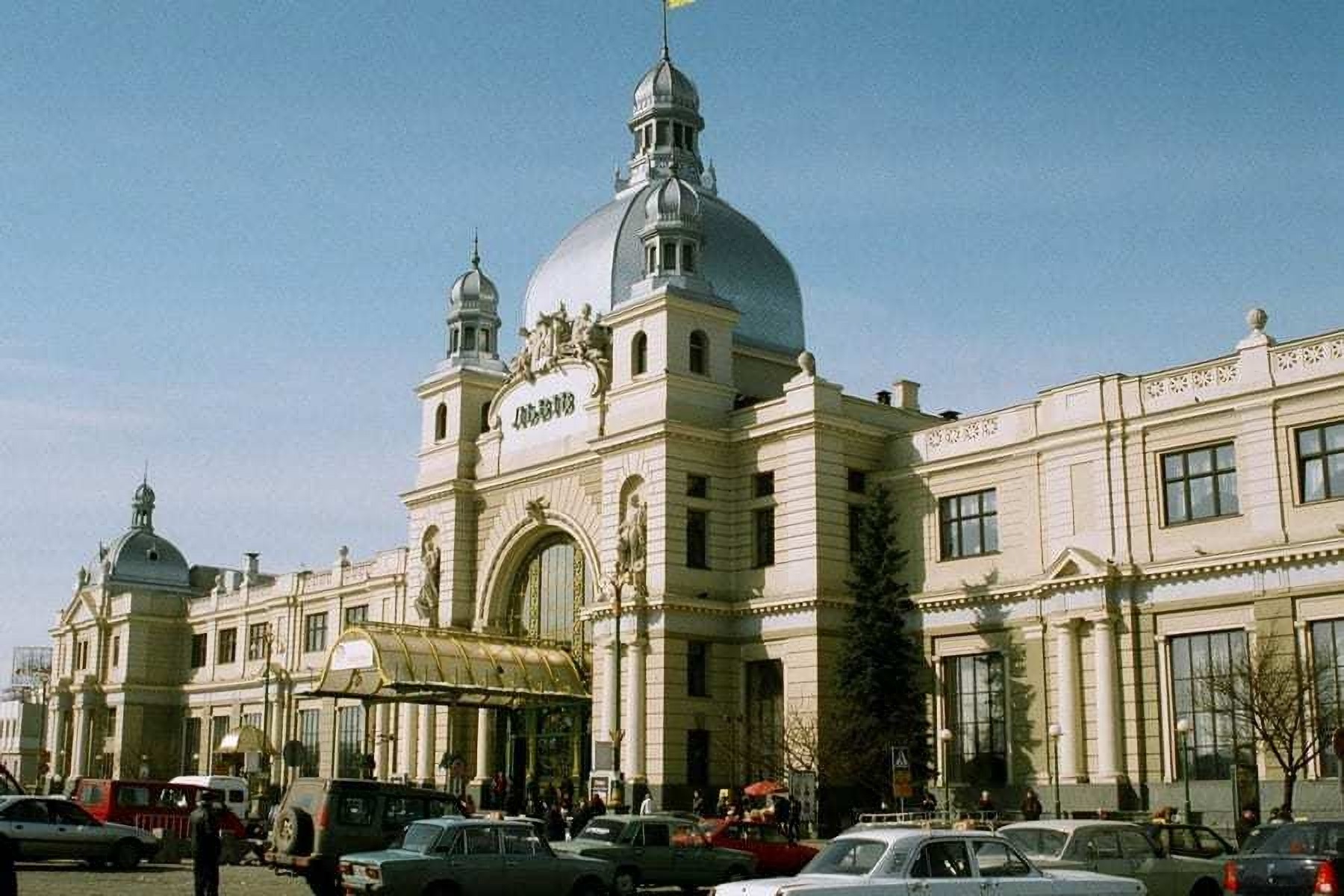 connected Lviv with Vienna, Przemysl and Krakow by railroad. When the number of passengers increased, and more trains started coming in, it was decided to build a new, more capacious train station.
connected Lviv with Vienna, Przemysl and Krakow by railroad. When the number of passengers increased, and more trains started coming in, it was decided to build a new, more capacious train station.
The new building of the station was built in 1904, and in 2003 it was extensively renovated. The station's front facade is decorated with symbolic sculptures: the woman, located to the left of the city's coat of arms, stands for the road and trade, and the man to the right is a symbol of Lviv and industry.
From the railway station you can go straight to the historic center of the city. Take streetcar number 1, 9 or 10, or you can walk and admire the beauties and sights of the cultural capital of Ukraine.
If you decide to walk, then after leaving the station through the central exit move forward along Chernovetskaya Street to the ring, here turn left into Horadetskaya Street and after passing a block on its right side you will see the first attractions.
St. Elbehta Church
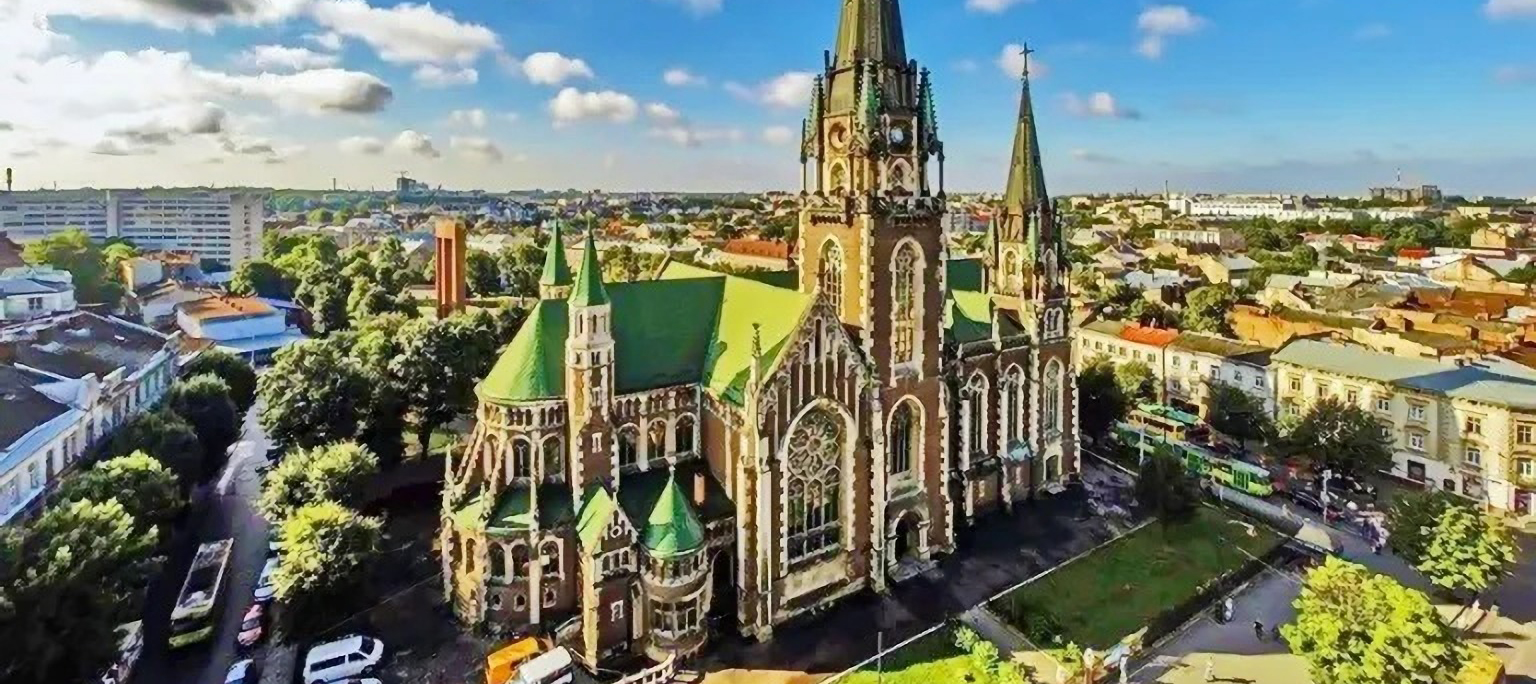
The church is made in the Neo-Gothic style and it is the highest cathedral in Lviv, its height is 85 meters. The church was built in the early 20th century in honor of Emperor Franz Joseph I's wife Elisabeth. Its exterior and interior use classical elements of Gothic architecture: the portal with a large rose in the center, sharp spires, vertical space inside. Elements of North German and French Gothic architecture were used in the construction. Since 1991 it is owned by the Ukrainian Greek Catholic Church and is called the Church of St. Olga and Elizabeth.
St. George's Cathedral
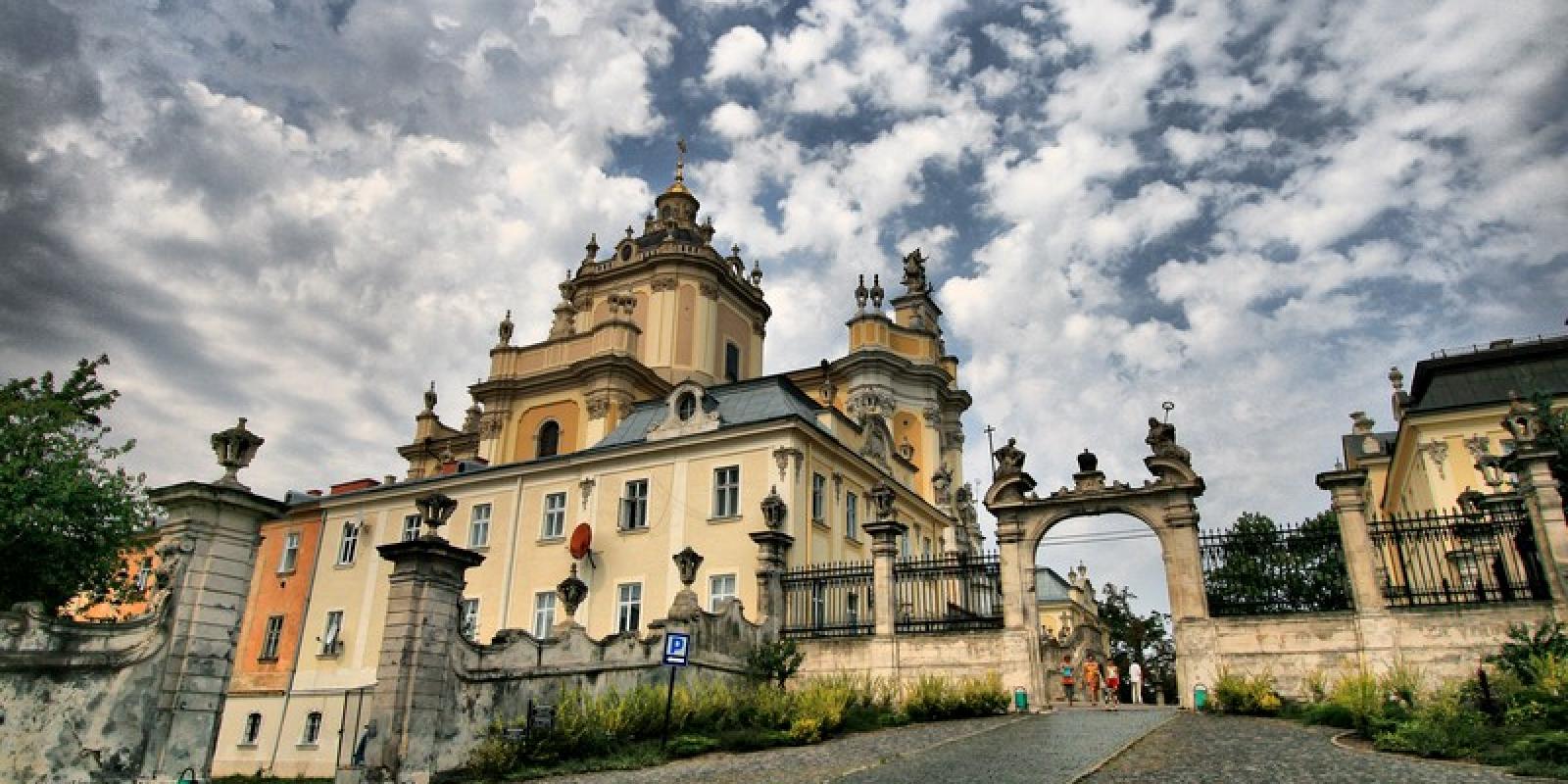
Next, go down the street and walk to the Cathedral of St. Jura.
In order not to miss it, you need to be guided by the circus, turning from Gorodetskaya street to the right and go up Svetoyursky Hill. The architectural complex of the St. Jura Cathedral is the main Greco-Catholic church in Lviv. It is a bright representative of Baroque period and amazes with its beauty. The cathedral as it is seen by modern tourists is its last construction of the 18th century, although the first church on this site appeared in 1280 under Prince Leo Danilovich and was Orthodox. The Cathedral of St. Jura, together with part of the architecture of the historic center of Lviv, is included in the UNESCO World Heritage List.
Ivan Franko Park
Descending from the Svitoyursky Hill along the Listopadovy Chinu Street, you can take a walk in the Ivan Franko Park.
The park is situated opposite to the building of the main building of Lviv University and is considered to be the oldest city park in Lviv as well as in the whole Ukraine.
Lviv University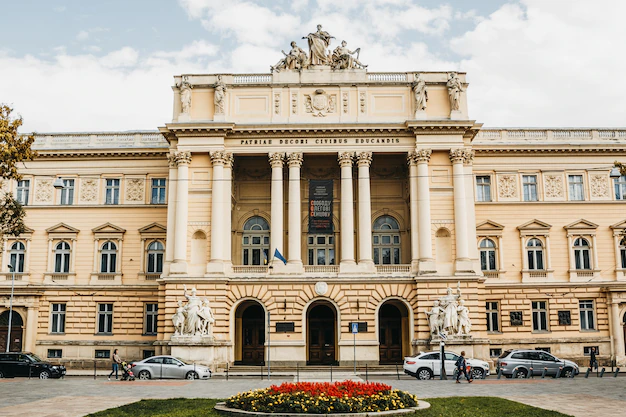
The University of Lviv, situated opposite to the park, is one of the oldest universities of Eastern Europe and the oldest university in Ukraine.
The main building of the university The main building of the University occupies a monumental building that used to be the seat of the Regional Sejm - the Parliament of Galicia and Lodomeria. Before the coming of the Soviet power the Lviv University was named after the Polish king Yan Kazimir, afterwards the educational institution was renamed after the Ukrainian poet and writer Ivan Franko, who in the 70-s of the 19-th century studied here at the faculty of philosophy.
Potocki Palace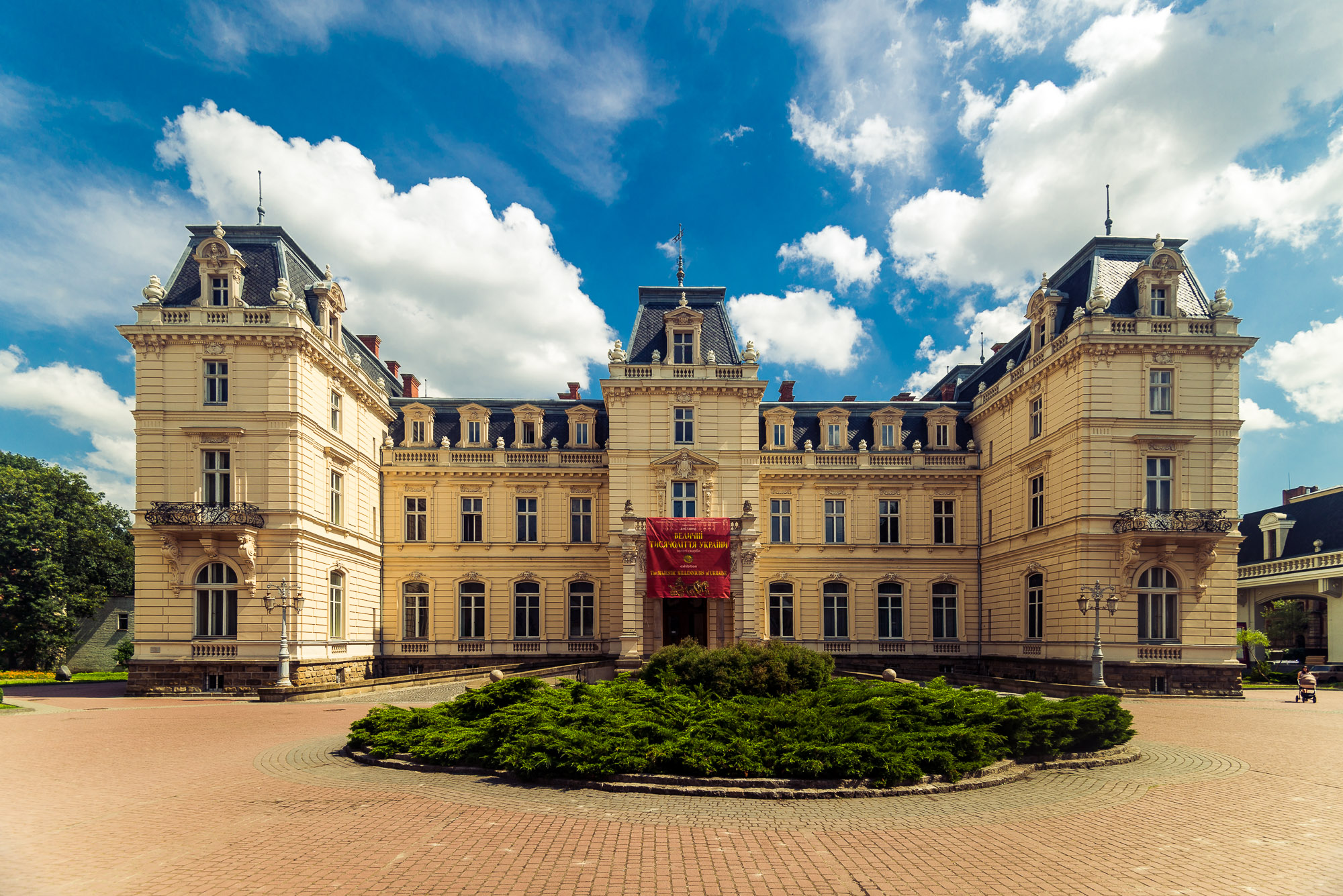
When you face the main entrance of the university, turn right and walk across the park to Slovacki street, then after two blocks turn left into Copernicus street; after a couple of tens of meters this street will bring you to the French Classicist palace, which used to belong to the Polish noblewomen of the Potocki family. Now it serves as a location for the Lviv Art Gallery - the largest art museum in Ukraine.
Lviv Palace of Arts
On the right side of Potocki Palace there is a modern building of the Lviv Palace of Arts, a square in front of which is often used for different art events.
Monument to Adam Mickiewicz
Continuing along Kopernika Street in the same direction you can get to Freedom Avenue to the Adam Mickiewicz Square. The monument to the great Polish poet Adam Mickiewicz, who gave the square its present name, was erected here in 1904.
Monument to Daniel of Galicia
Next, turning from the square to the right you will get to Galychy Square with the Monument to Daniel of Galicia erected on it. The monument weighs 69 tons, 6 tons of granite and 9 tons of bronze embodies the image of King Daniel in robes of arms, sitting on a raven horse in marching armor.
According to the sculptors' concept the Galitsko-Volynsk prince's forefinger is addressed to posterity and conveys a message according to which the king bequeathed to cherish and protect the inheritance left by him from any oppressors of freedom and faith.
Bernardine church and monastery
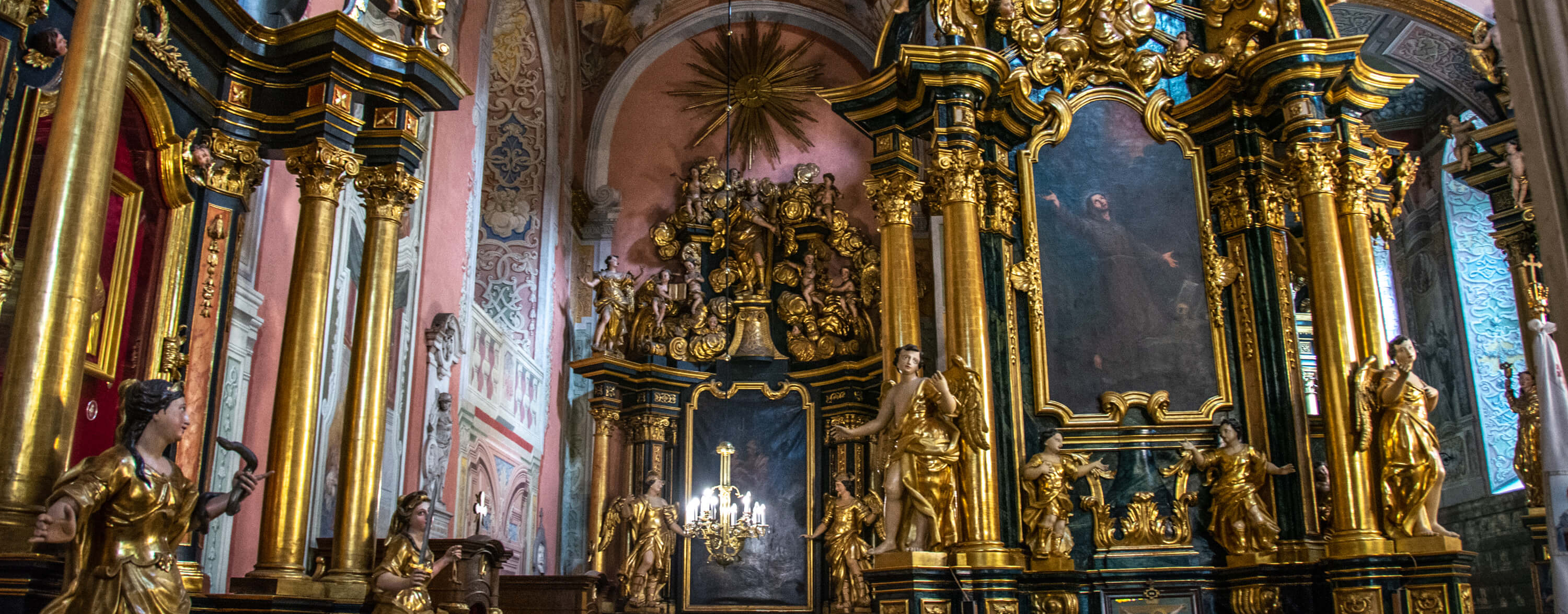
Going further in the same direction you can come to the Cathedral Square. On the right side of it there will be Lviv Flower Market, and on the left side you will see monumental Bernardine church and monastery, which looks more like a fortress.
This monastery really used to be a part of Lviv's defensive system; there are many urban legends connected with it. According to one of them, the Bernardine Convent was connected by underground passage with nearby Claris Convent.
Remains of an ancient underground passage were indeed discovered in this area and later used to build an underground passage on Mytnaya Square.
Clinnian Gates, which protected ancient Lviv from enemies, are situated further from the monastery. You should start your acquaintance with them from the wooden bridge over the stylized moat.
City Arsenal
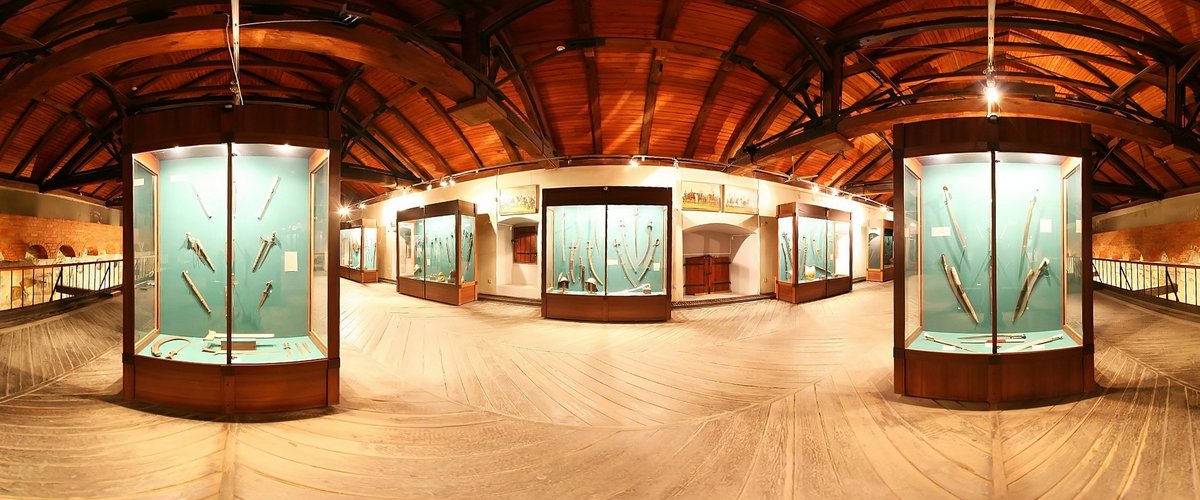
Further down Cellar Street a block from the gate complex is the City Arsenal.
On the territory of the arsenal there is the Arms Museum, which has a large collection of arms and firearms, as well as military uniforms of different countries and eras. In the 18th century, captive Cossacks and haydamaks were kept in the dungeons of the arsenal in Lviv; torture chambers and the abode of the city executioner were located there, too.
Church of the Assumption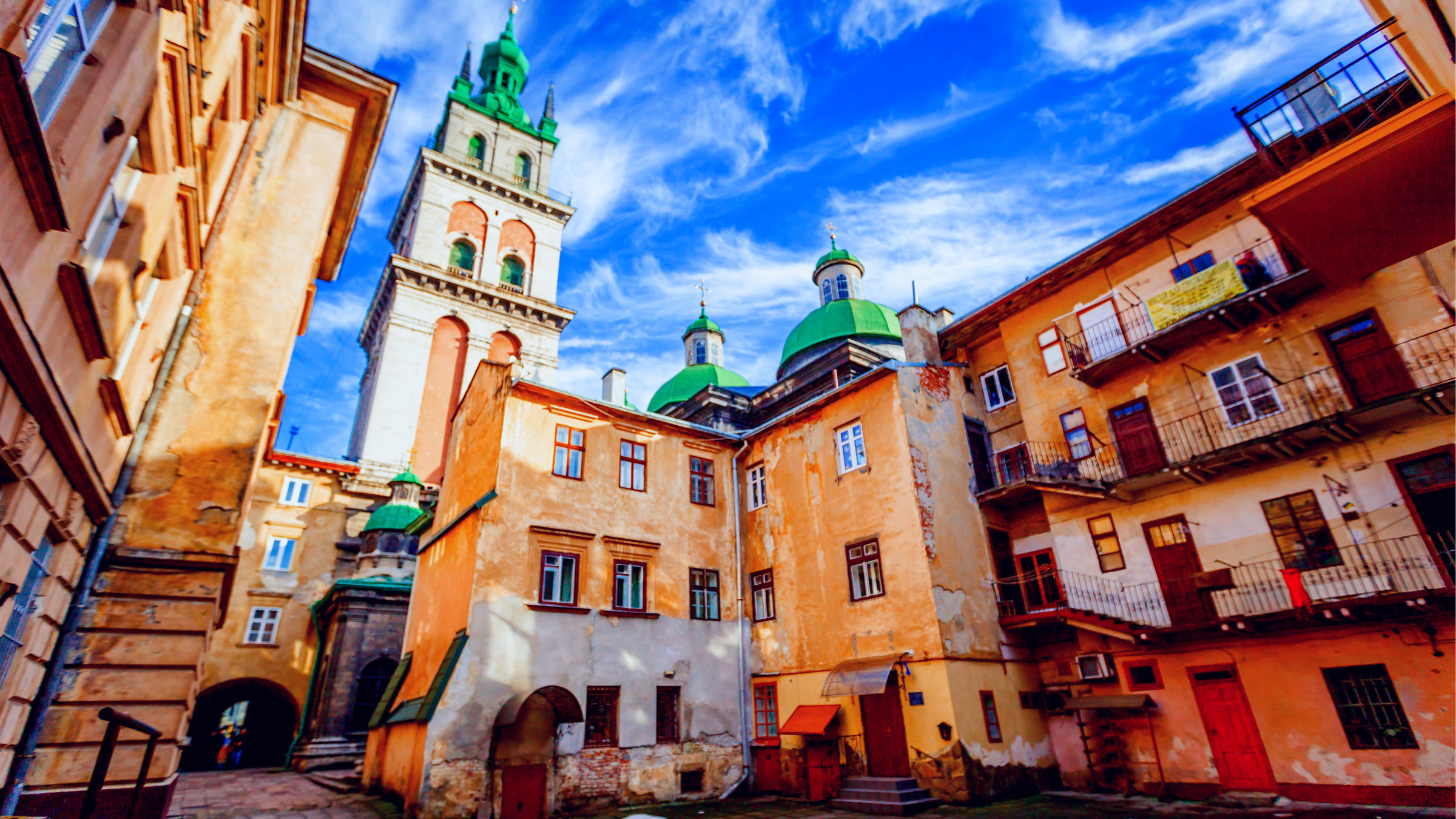
Next to the arsenal at the intersection of Russian Street, there is the entrance to the yard of the Orthodox Church of the Assumption.
Assumption Church is the main Orthodox church in Lviv. Since the 16th century, during its centuries-long existence, it has been rebuilt several times. At the church there was a printing house, a museum, a school and a library. Here in 1918 was held a meeting of the Ukrainian People's Rada, which later became the parliament of ZUNR (Western Ukrainian People's Republic).
The architectural ensemble of the Church of the Assumption, in addition to the church itself, includes a bell tower, Kornyakt's tower and a chapel.
Monument to Ivan Fyodorov
Near the church is a monument to Ivan Fyodorov, the Ukrainian first printer. There is also a small book market, where you can buy books, the pages of which preserve the unique atmosphere of Lviv, for a small fee.
Powder Tower
Opposite, across the street Podvalsna, there is the Powder Tower, located behind the second line of city fortifications; during the war the tower was used as an ammunition warehouse, and in peacetime as a granary.
In 1959 the Directorate of the Lviv branch of the Union of Architects of Ukraine moved in. At about the same time two figures of white marble lions were installed near the entrance to the tower.
Dominican Cathedral
Let us return to the monument to Fyodorov. To the left of it you can see one 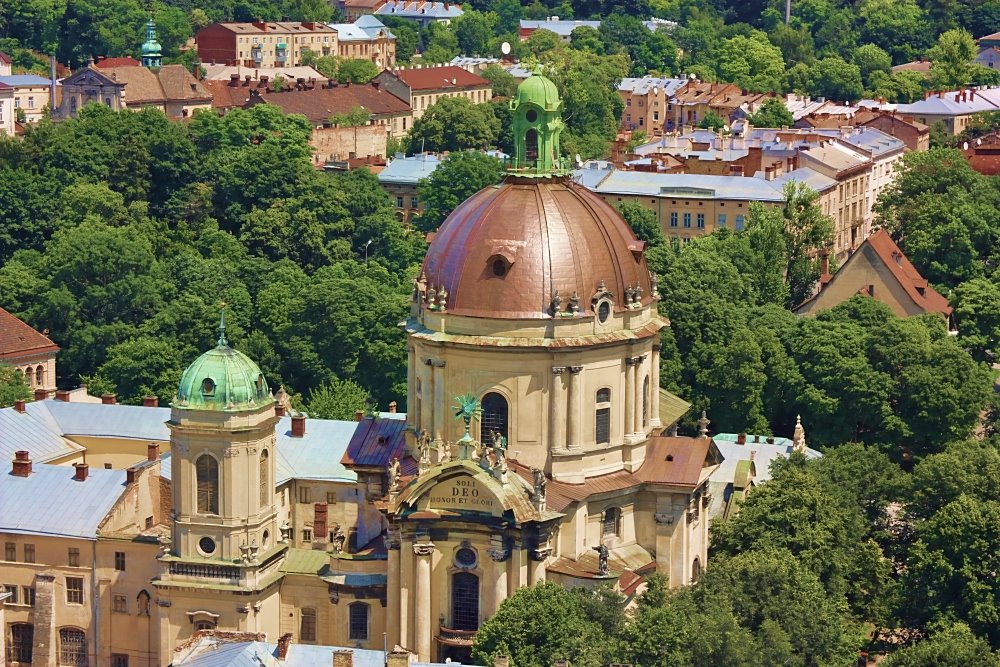 of the most recognizable sights in Lviv - the Dominican Cathedral.
of the most recognizable sights in Lviv - the Dominican Cathedral.
The Baroque cathedral was built on the site of an abandoned Gothic church, where Peter the Great signed the coalition treaties with the Poles against the Swedes.
The facade of the building is decorated by the motto of the Dominican Order - "To God alone be the honor and the glory". In Soviet times.
In Soviet times the Museum of the History of Religion and Atheism was opened in the cathedral, which later became the Museum of the History of Religion and is still open to visitors today.
Pharmacy Museum "Under the Black Eagle"
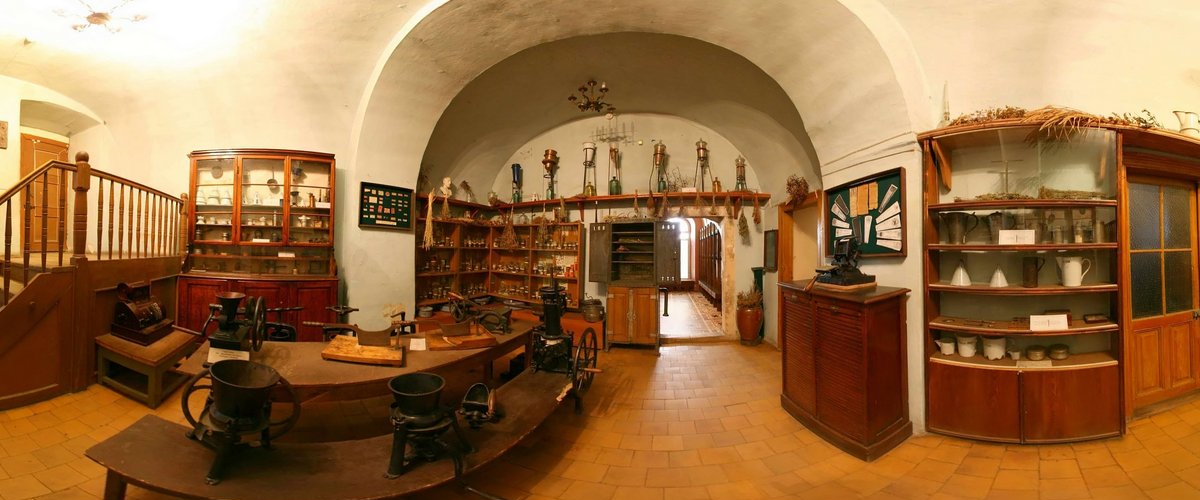
At the intersection of Stavrapigii and Drukarskaia Streets, a block away from the Dominican Cathedral, a pharmacy-museum has been operating for several hundred years.
The Pharmacy "Under the Black Eagle" is the oldest in Lviv. On its territory there is a museum, the exhibits of which tell about the development of pharmacy. In the pharmacy-museum you can buy the branded iron wine or iron saccharate, which has a restorative effect on tourists.
"Gasova Lampa" Museum-Restaurant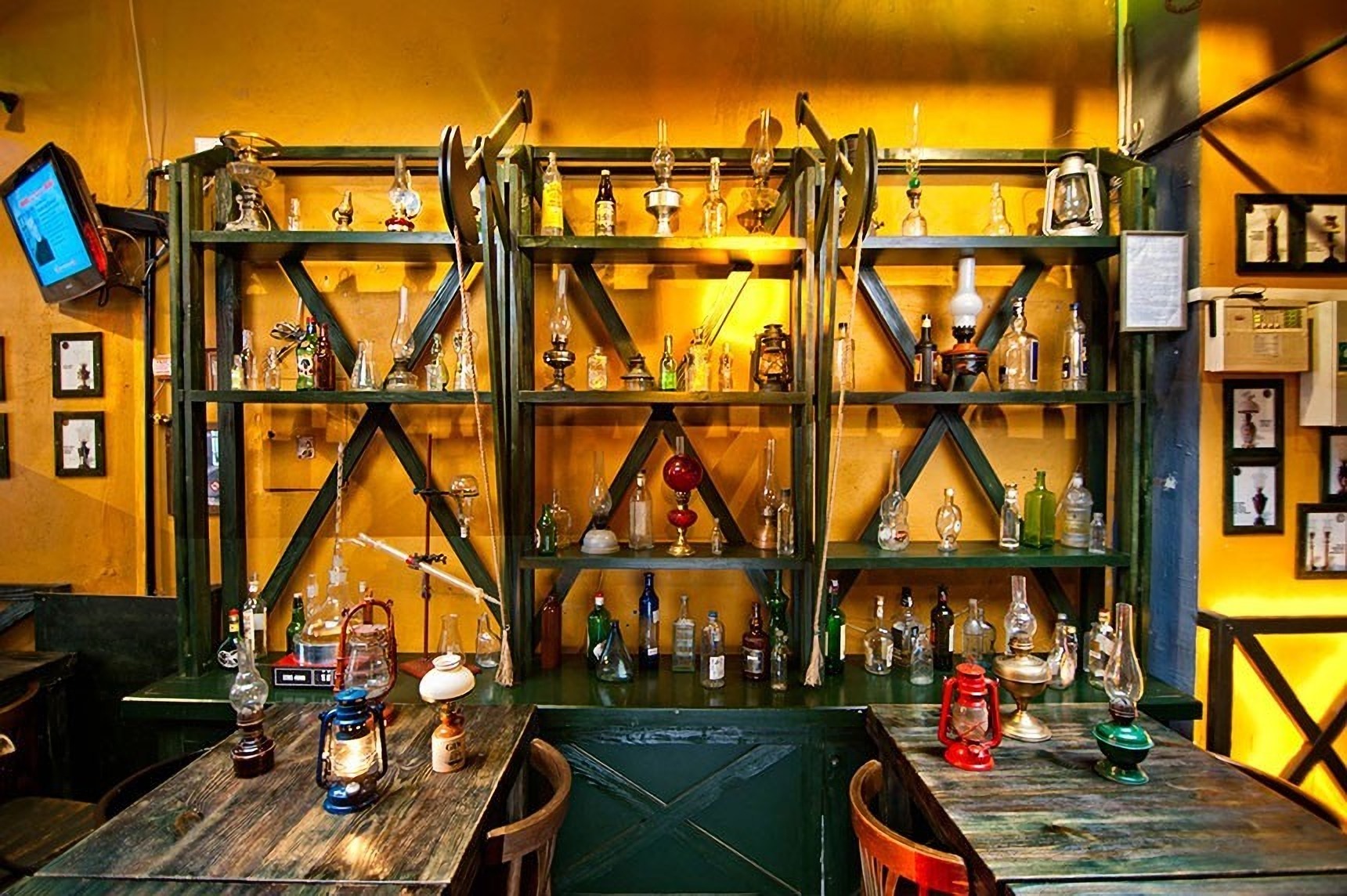
After walking a block along Drukarskaya Street, you will reach Armianska Street and, turning left on it, you will see the Gasova Lampa Museum-Restaurant, opened on the 155th anniversary of the first kerosene lamp's invention in Lviv.
It has an impressive collection of lamps. The employees of the museum-restaurant welcome guests in the images of the inventors of those lamps. The interior design features reproductions of photographs and various laboratory paraphernalia.
Armenian Cathedral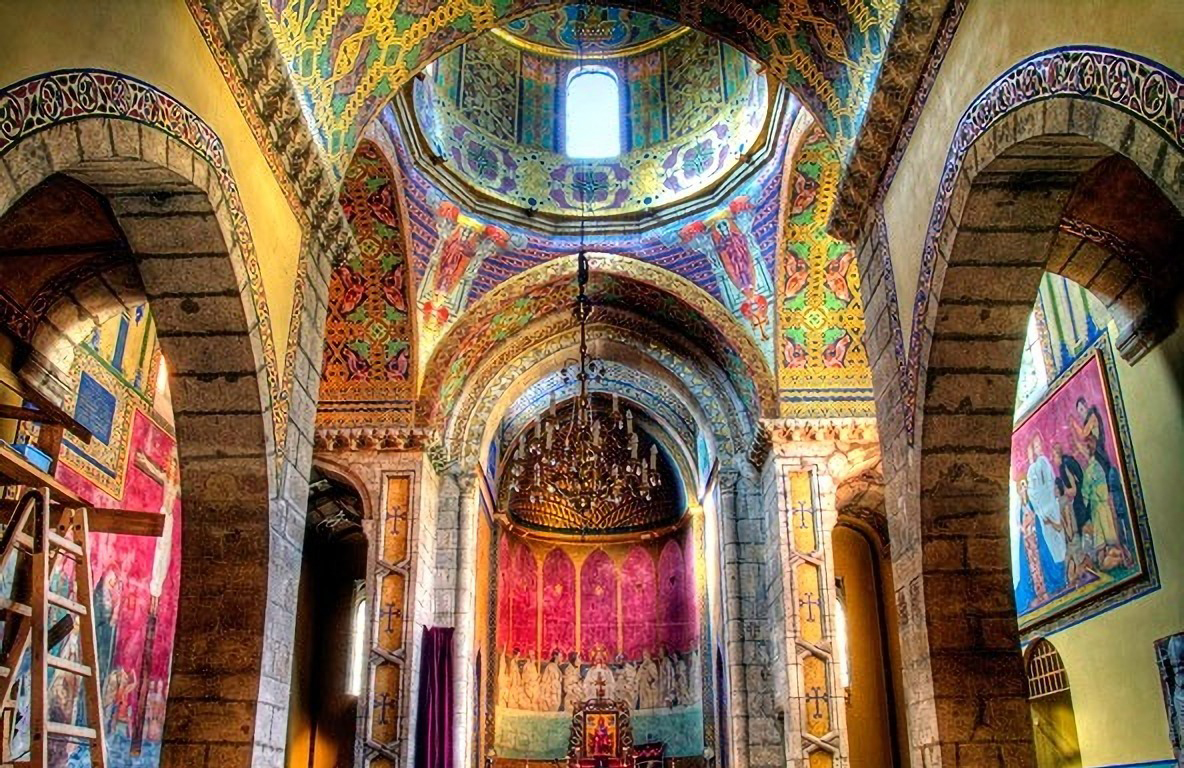
Nearby is another landmark of Lviv - the Armenian Cathedral. It is a unique monument of Eastern culture on the European continent. The interior of the temple attracts tourists with its carved figures, window stained-glass windows and decorative mosaic, special attention should be paid to the dome, which is supported by hollow ribs made of clay jugs.
Rynok Square
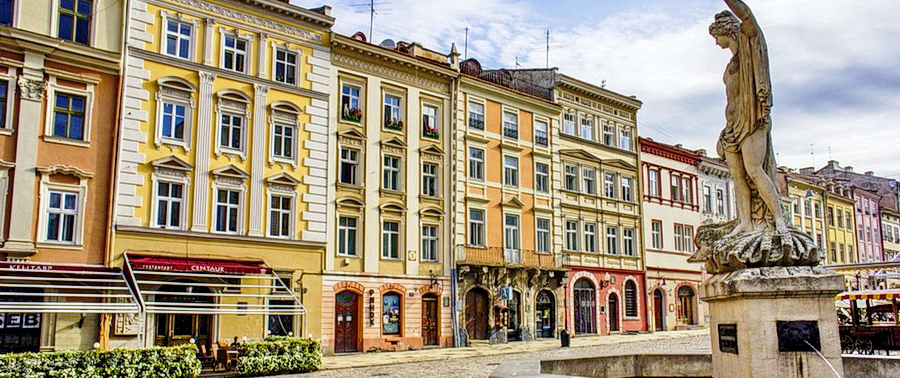
Further on Armyanska Street there's a crossroads with Krakowska Street and at the crossroads we turn left to find ourselves next to Rynok Square.
Its architecture is typical for all Central European cities of the Middle Ages. After a massive fire in 1527, all that remained of the old wooden buildings was nothing but cellars.
In the corners of the square there are fountains: Adonis, Amphitrite, Neptune and Diana.
Around Rynok Square there are houses of interest: Bandinelli House, Black Kamenica, Venetian House, Lubomirski Palace, Andreoli Passage.
Viewpoint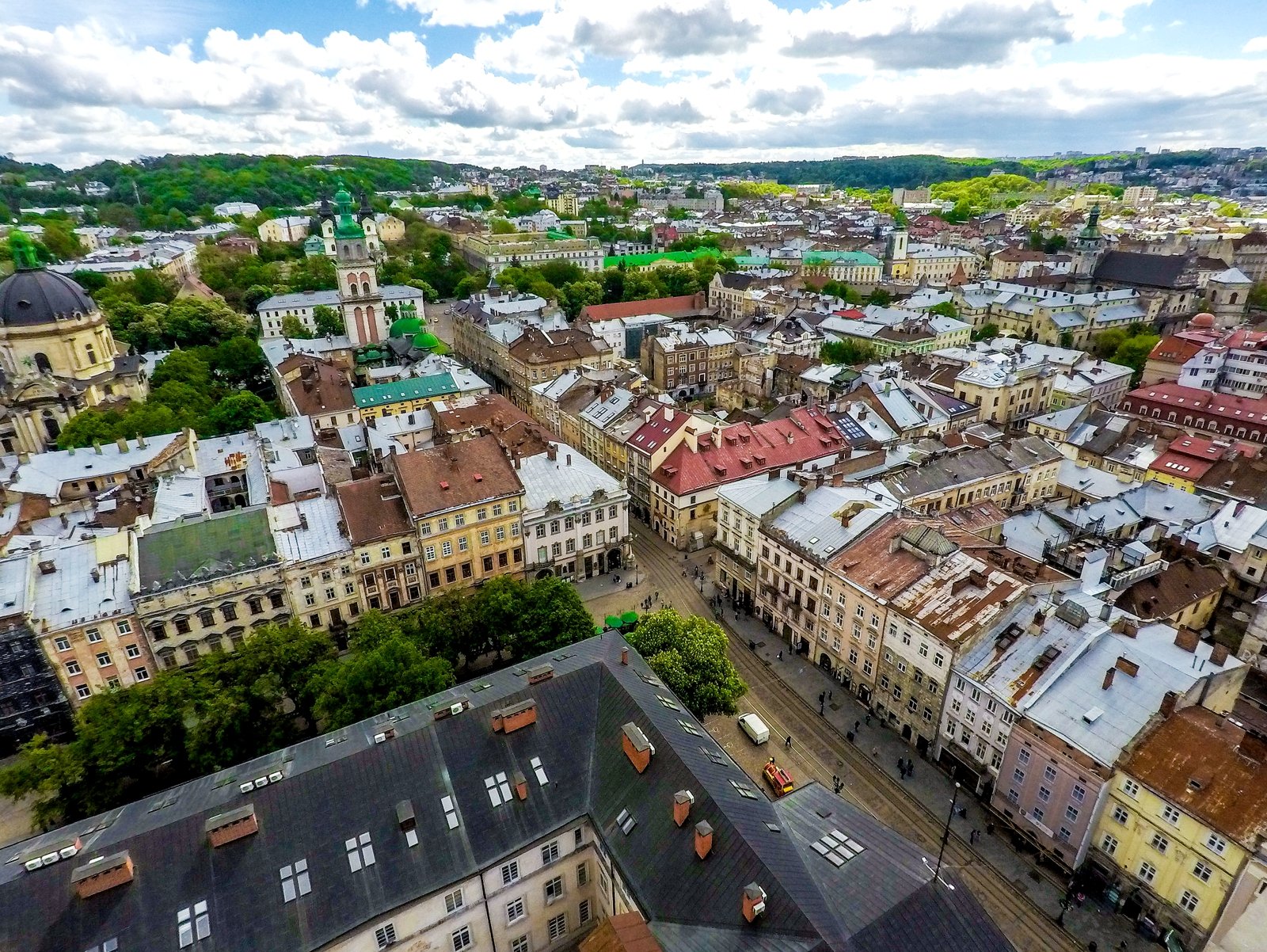
Tourists in Lviv have a unique opportunity to take a good look at the square and the surrounding neighborhood from the height. You should not be lazy and climb to the very top of the City Hall. The entrance to the City Hall is free, but you have to pay a symbolic fee to get to the observation deck.
If you're not in great physical shape, have patience and water, because it's a long climb, but what a reward at the finish. The cathedrals, which seemed like giants, from a height become just toy-like.
Restaurant "Italian Yard"
On Rynok Square at number 6 there is a secluded place - "Italian Yard".
Cozy spacious terrace allows you to feel yourself in Italy, on the loggia in the center of the courtyard you can drink aromatic Lviv coffee, in the summertime in "Italian Yard" are held evenings of chamber music, and along the loggia is constantly open exhibition of ancient sculptures.
"Kryivka"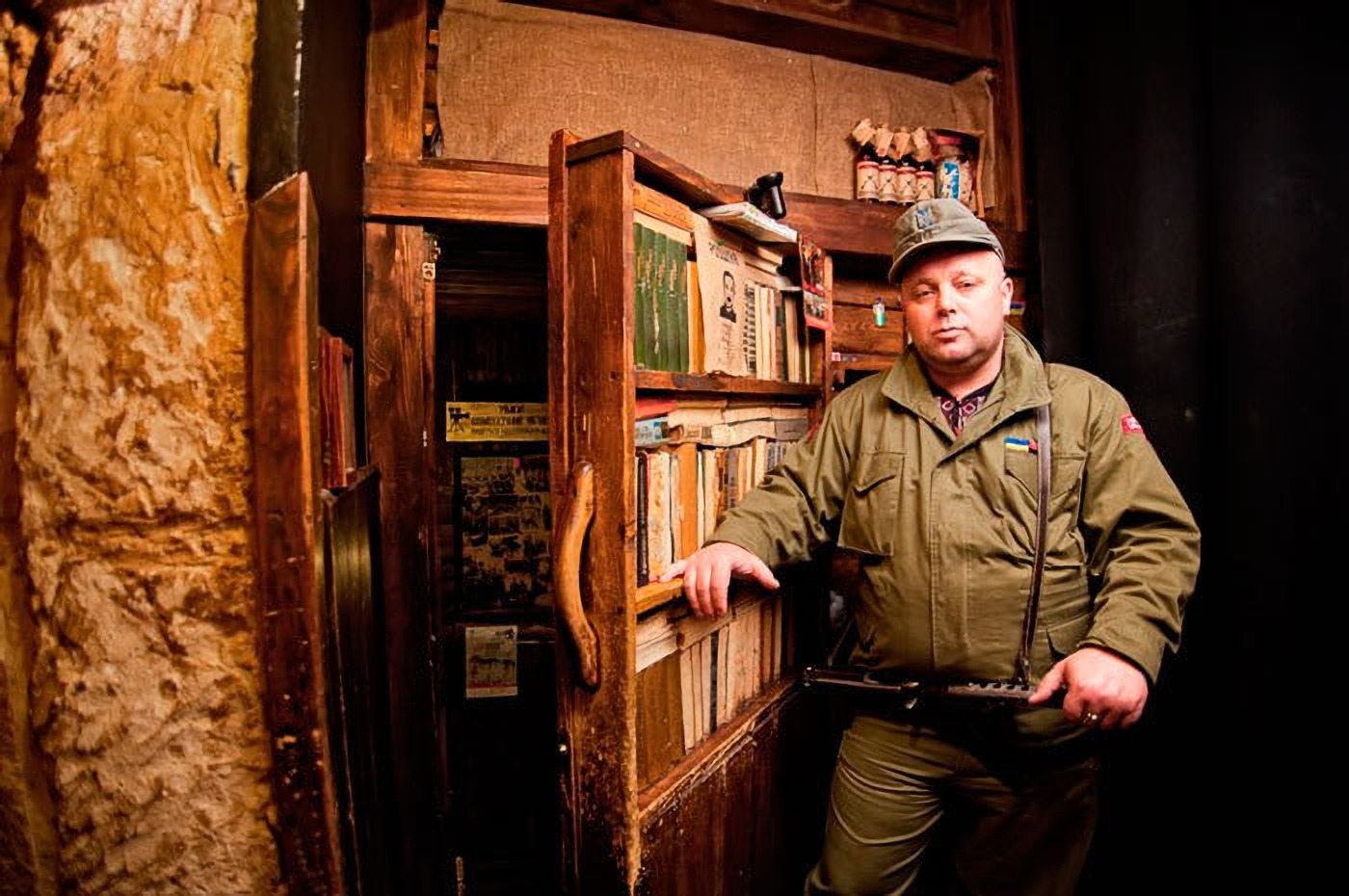
On the other side of the square there's another unique place - "Kryivka", which is rather famous not so much for its cuisine, although it is good here as for its setting.
"Kryivka" is a haven for Ukrainian Insurgent Army (UPA) soldiers, but it's not easy to get into the place, as it doesn't have a sign. The cafe is located directly opposite the City Hall in the basement of an apartment building. In "Kryivka" you can see a collection of military equipment, German grenades, grenade launchers and other weapons, radios, encryptors and, of course, try the authentic half-meter sausage, krovyanka, kulesh, herring, and drink burners, tincture or kvass.
"Kopalnia Kovy" (LVIV COFFEE MINING 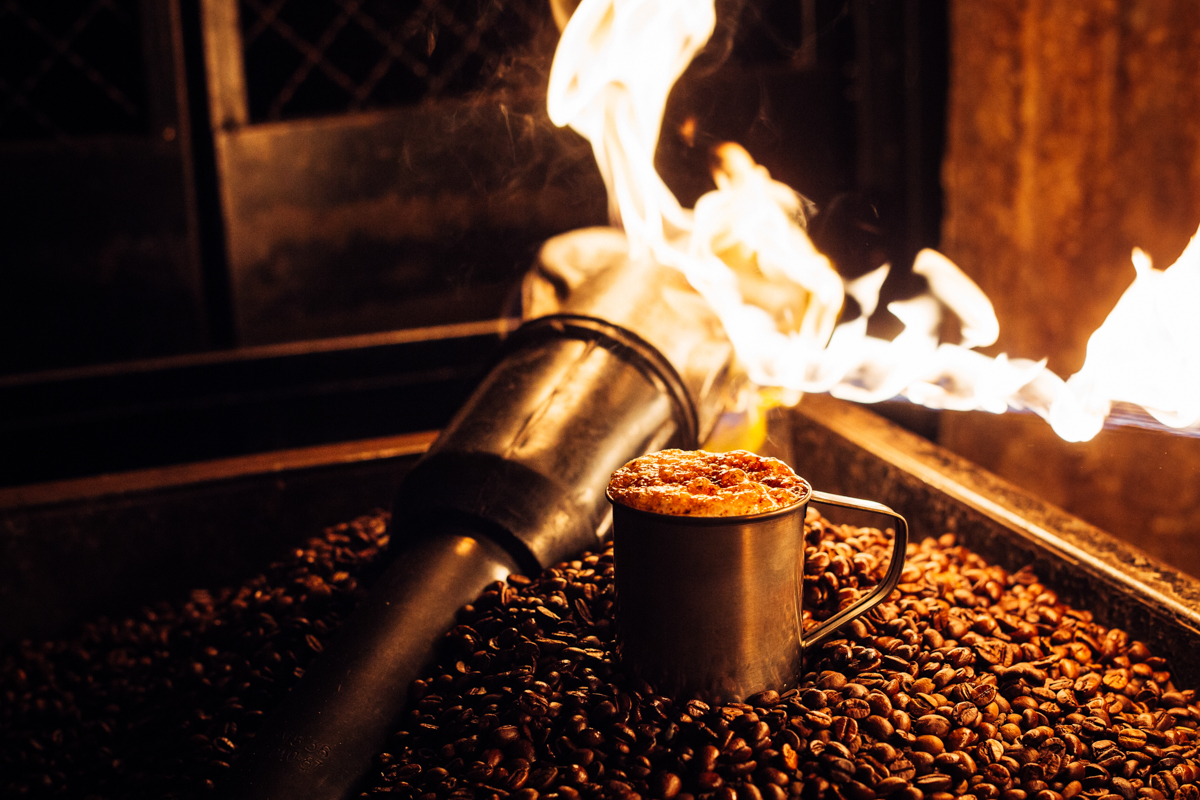 MANUFACTURE)
MANUFACTURE)
It is no secret that in the Ukrainian climate coffee trees do not take root, so Lviv coffee is mined in a deep mine, located directly under the Rynok Square.
You can not only taste the specialty drink of Lviv, but also buy interesting books and souvenirs as a memento of your trip. You can also go down into the mine, wearing a helmet, and drink coffee there, right under the ground.
Lviv Chocolate Shop (Lviv Handmade Chocolate)
Next to the Rynok square there is Lviv Chocolate Shop.
Although a chain of chocolate shops is now open in many cities in Ukraine, a visit to Lviv Chocolate Workshop in Lviv is a must. It abounds with chocolate products, aromatic coffee, and sweet souvenirs that you can't pass by.
"Mazoch" Café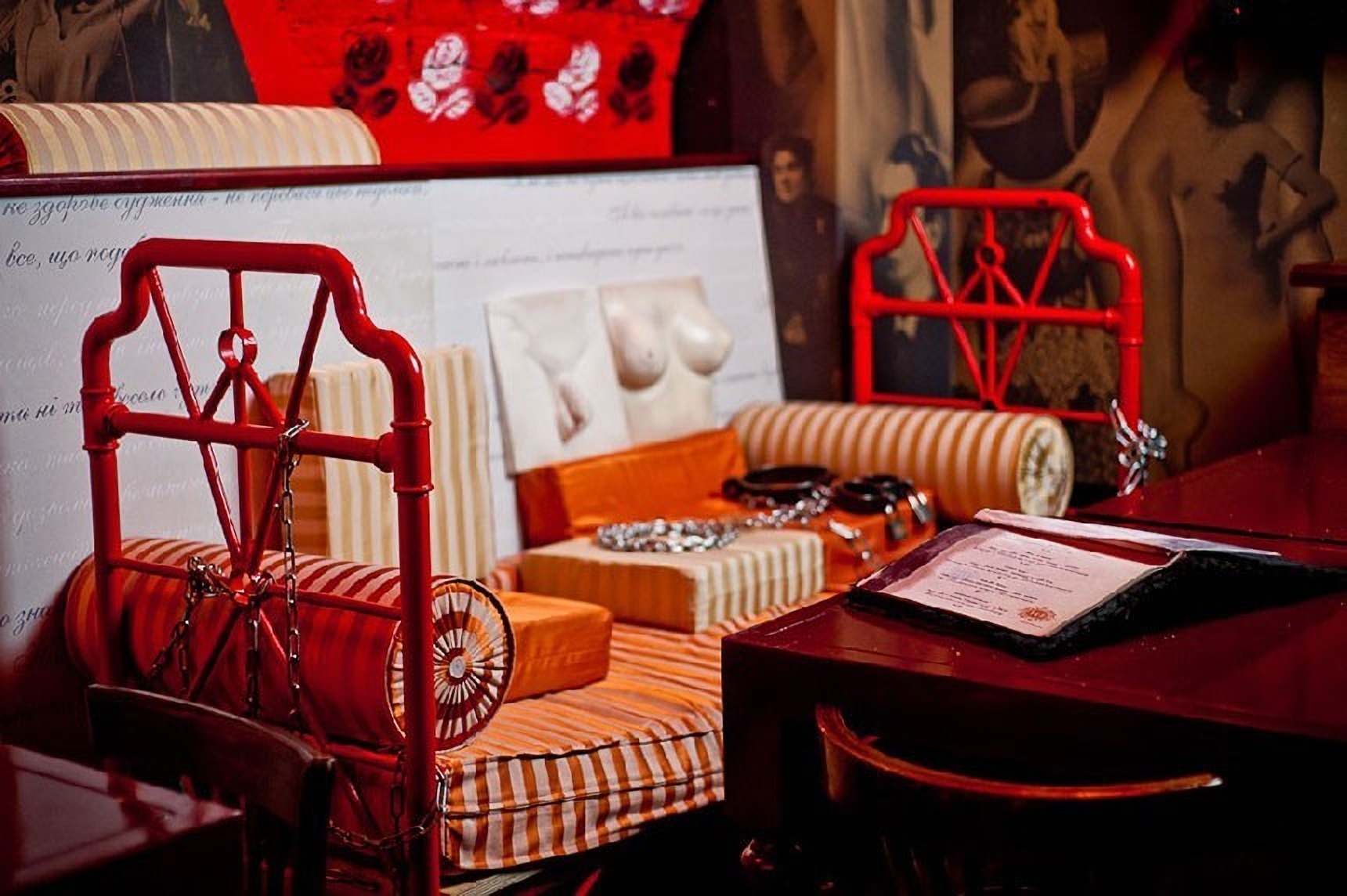
There is an atmosphere of Leopold von Sacher-Masoch's work in the ard Café Masoch: whips, handcuffs, leather whips, interesting chairs with pepper, hanging brassieres and erotic photos. All the food and drinks are also related to the theme of masochism.
At the entrance to the art cafe is a full-length sculpture of Leopold von Sacher-Masoch and you can reach into his pocket and find something interesting.
Naturally this place is not for visiting with children, but after the description you guessed it yourself.
Boimov Chapel
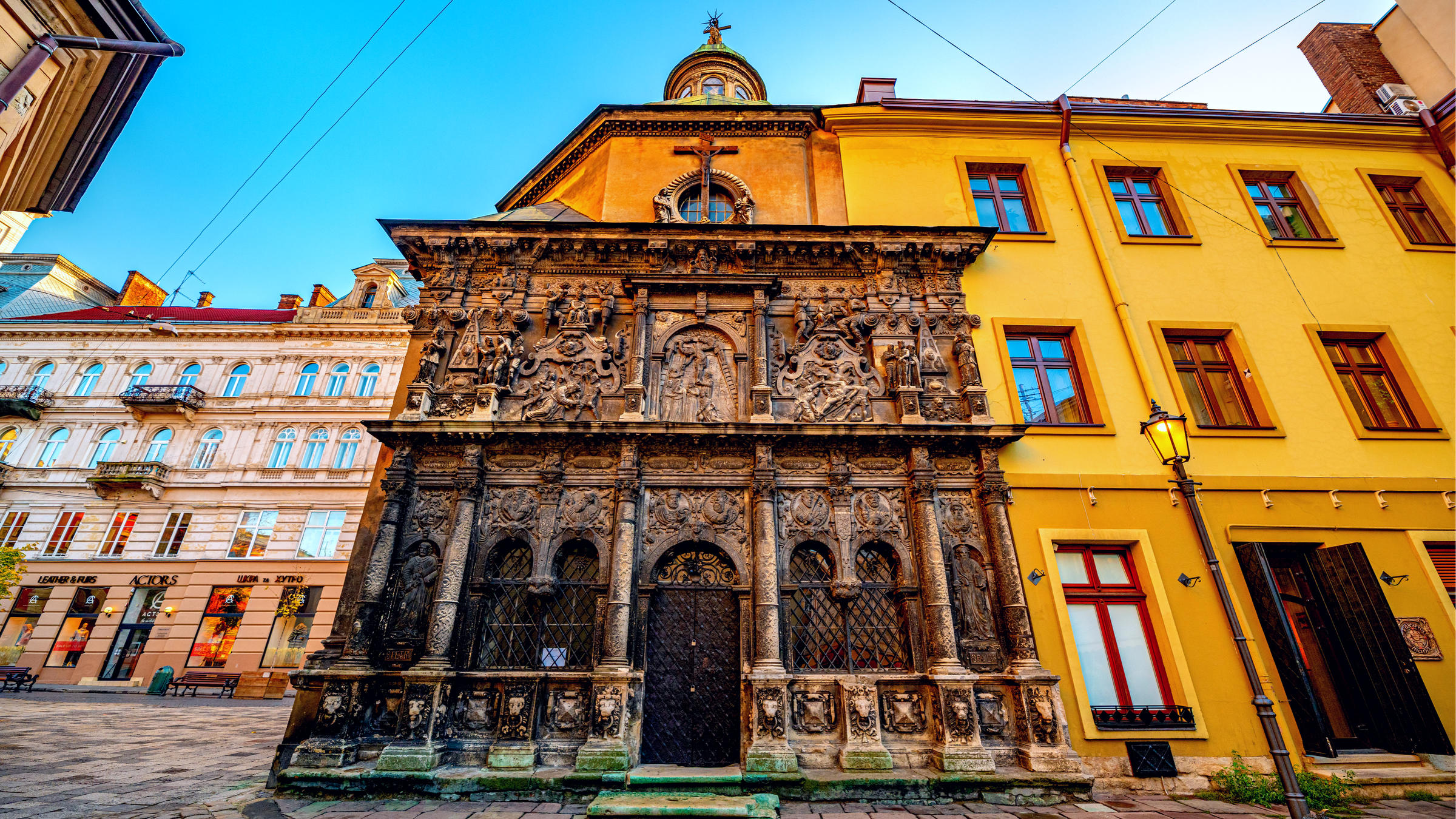
Turning from the Serbskaya Street to the right, you can go along the Old European Street to the brightest chapel in Lviv - the Chapel of Boim.
It is a late Renaissance monument, the like of which does not exist in the whole European architecture. From the side of Halytska Street, the wall of the chapel bears the original portraits of the rich merchant George Boim and his wife Jadwiga from the early 17th century. In the niches of the facade you can see the figures of the Apostles Peter and Paul.
Latin Cathedral or the Cathedral of the Assumption of the Virgin Mary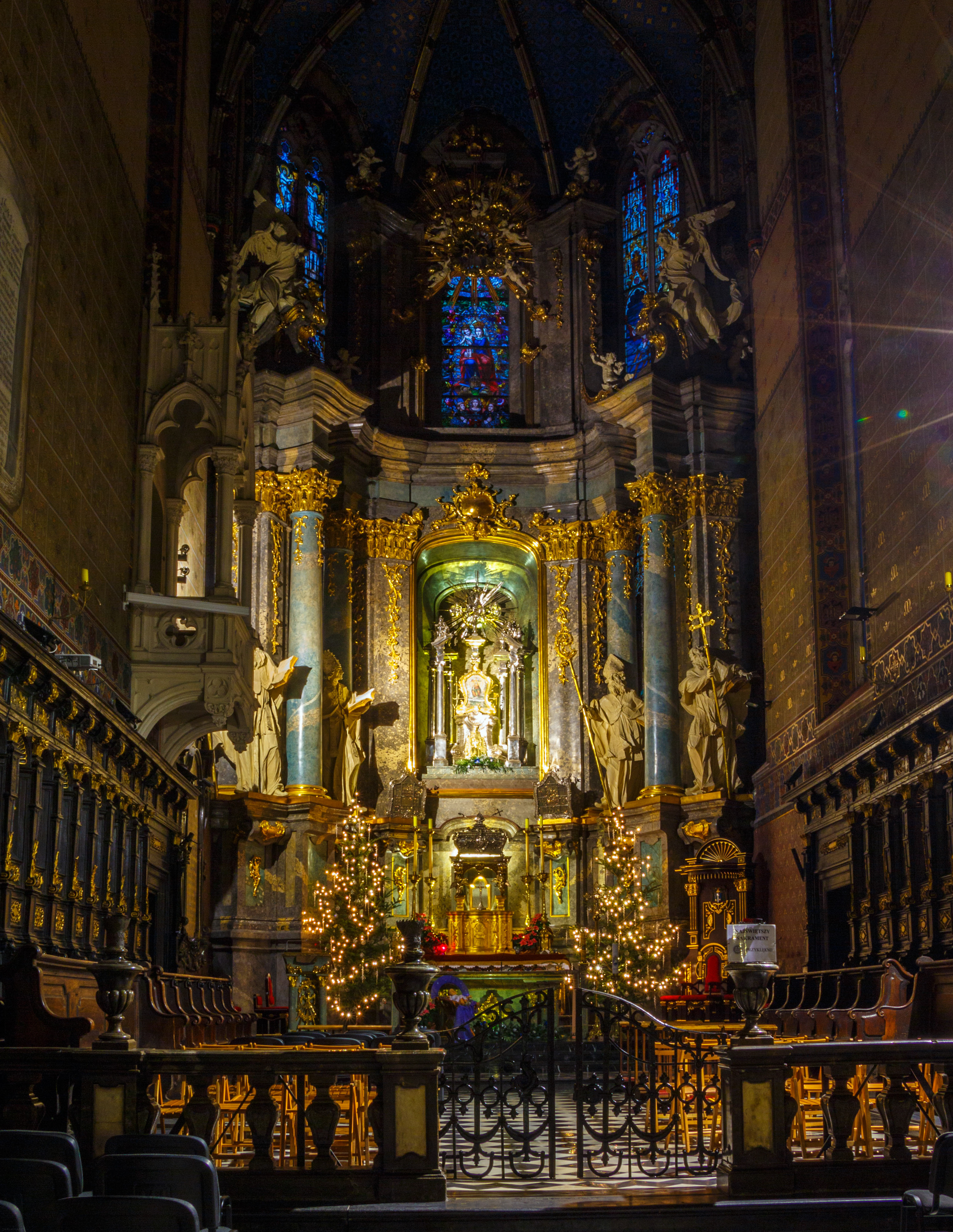
Having bypassed the chapel, we will approach the only Ukrainian temple that was awarded the status of a small basilica - the Latin Cathedral.
This cathedral has a special mark of distinction - a golden rose awarded by Pope John Paul II. The Cathedral of the Assumption of the Virgin Mary has been under construction for 100 years, with construction beginning in the 14th century. Throughout its existence, the appearance of the cathedral has changed, the most significant restoration took place at the end of the 18th century, when the church acquired the features of Baroque and Rococo styles, popular at that time.
Peter and Paul Church
Turn left on Teatralnaya Street and you'll see the Church of St. Peter and St. Paul. The Church of St. Peter and St. Paul of the Jesuit Order is another landmark of Lviv.
For a long time it was the tallest in the city. The Jesuit church is interesting for its dungeons, where you can see the remains of the princely walls of the fourteenth century, artifacts and frescoes.
Monument to Taras Shevchenko
Through Ivan Pidkova Square you will reach one of the main locations on Svoboda Avenue, the monument to Ukrainian poet Taras Shevchenko, which was erected in honor of Ukraine's first day of independence on the site of the Lenin Monument.
The sculpture is made of bronze and stands on a pedestal of gray and black granite.
The statue of the poet reaches a height of almost four and a half meters, and next to the monument there is a 12-meter stele made of bronze, which symbolizes the wave of national revival.
The square near the monument is one of the favourite places of Lviv's youth.
Statue of Liberty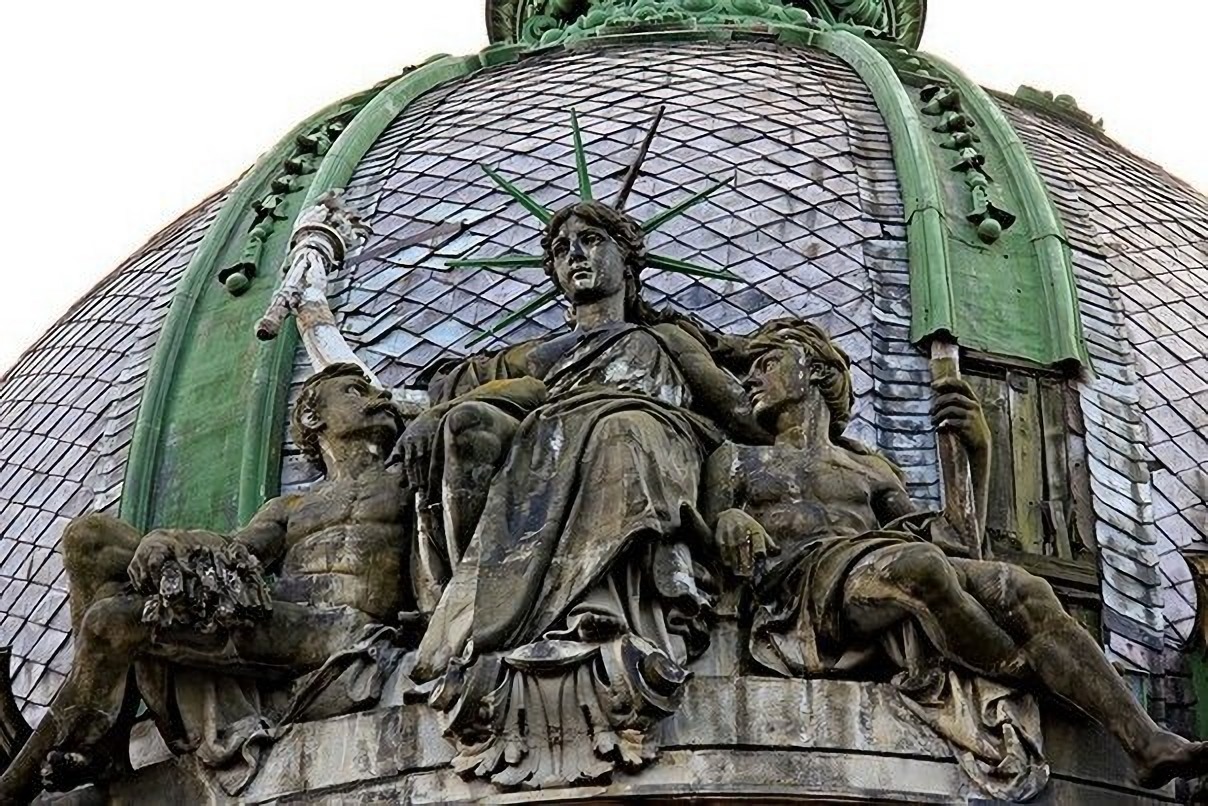
Lviv has its own statue of Liberty, though it is seated. It is located almost opposite the monument to Shevchenko, on the other side of Freedom Avenue.
On the upper facade of the building of the Museum of Ethnography and Arts and Crafts. Like the American one, the head of the stone female figure is decorated with a crown, and in the hands of the sculpture is a torch. However, unlike her foreign sister, the Galician Svoboda is seated, and also embraces two stone men.
Lviv National Opera

Walk along the Svoboda Avenue and you will come to one more symbol of the city - the Lviv National Opera.
It is its facade that is depicted on Ukrainian banknotes in denominations of 20 hryvnias. The theater is rightfully considered one of the most beautiful in Europe and has good acoustics. For 100 hryvnias you can go inside and see two halls: the Mirror Hall, where the busts of great singers, conductors and actors, who performed in this opera, and the Audience Hall.
"High Castle" Park
The last point of the Lviv itinerary in one day will be the "High Castle" Park.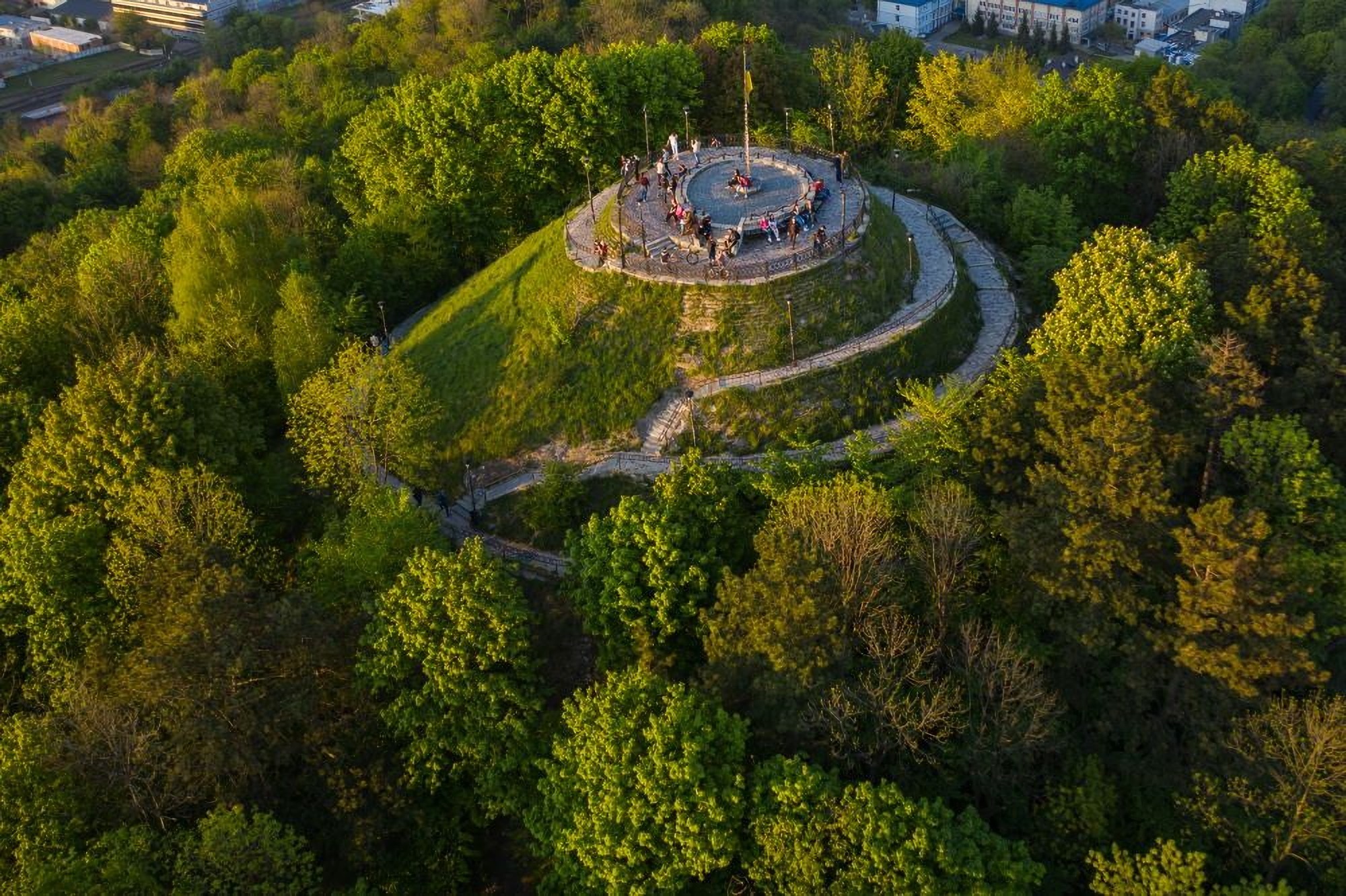
It will take 20-30 minutes to get there from the opera house, as there is no public transportation from this point of the city. The park is located 413 meters above sea level on Zamkova Hill, which was artificially filled in the late 19th century to commemorate the anniversary of the Union of Lublin.
The view of the city from here is breathtaking, and if you go here in the early morning, you can enjoy not only the panorama, but also the silence, which adds to the romance.
But assess your strength adequately, in summer it is a fun walk, whereas in winter you will have to try hard to reach the top.
As you can see just one route in Lviv can give you a lot of unforgettable impressions. Almost everyone who has visited Lviv at least once has noticed that the city has its own aura that makes you come back here again and again and every time you discover it from a completely different angle.
If you want to combine high quality and inexpensive treatment with a trip to one of the most beautiful cities in Europe, please contact the managers of UAmed TOURS.
Best clinics in Lviv
How do we organize your medical trip?









